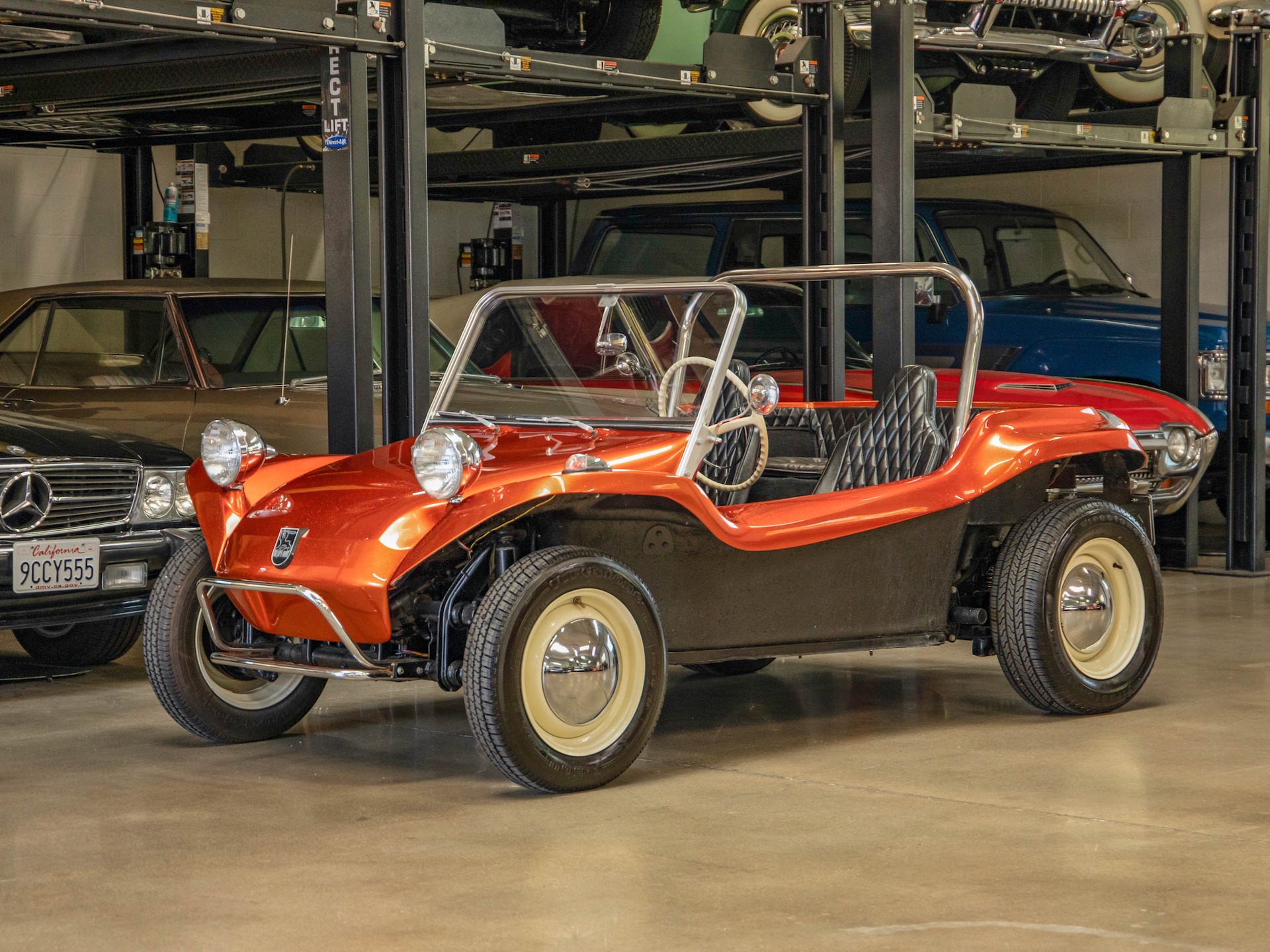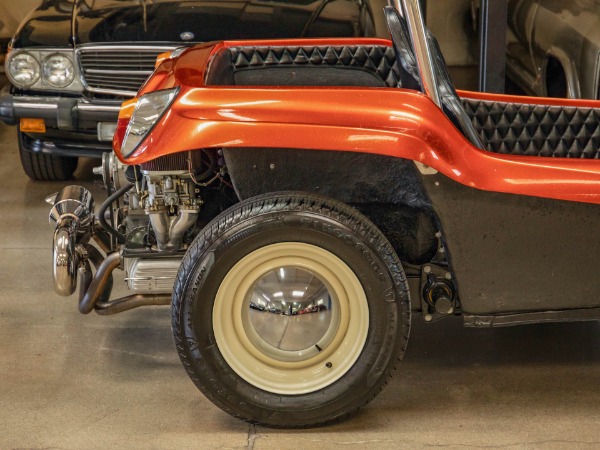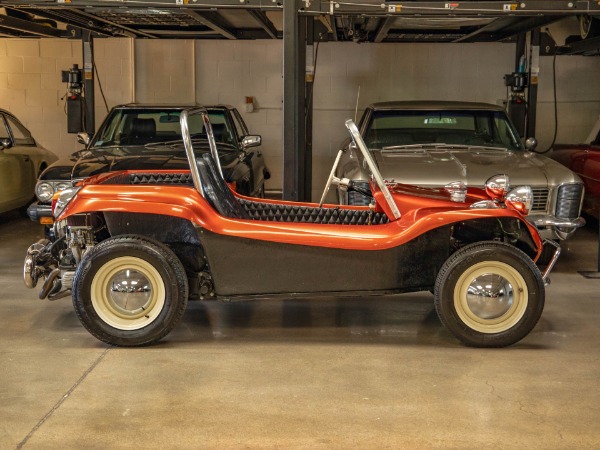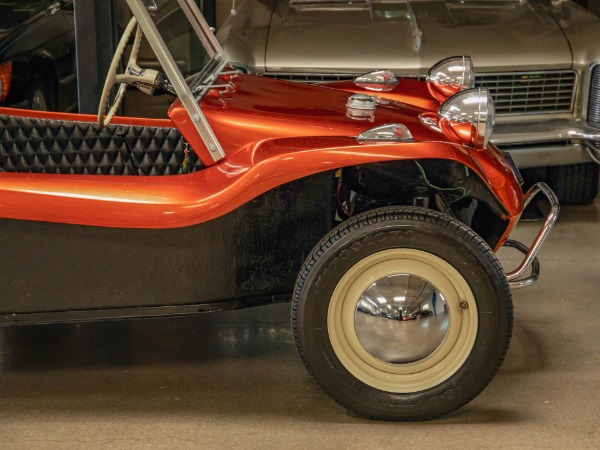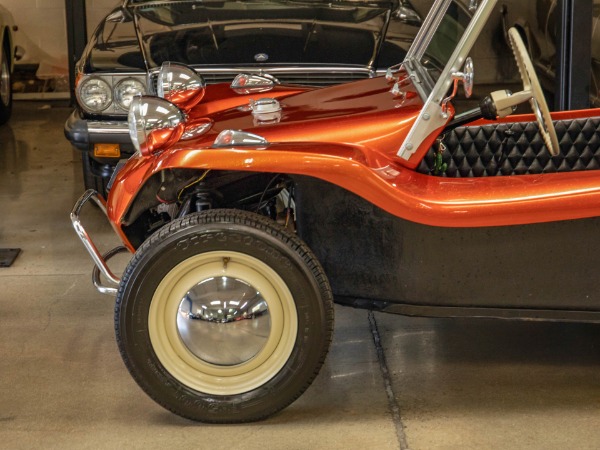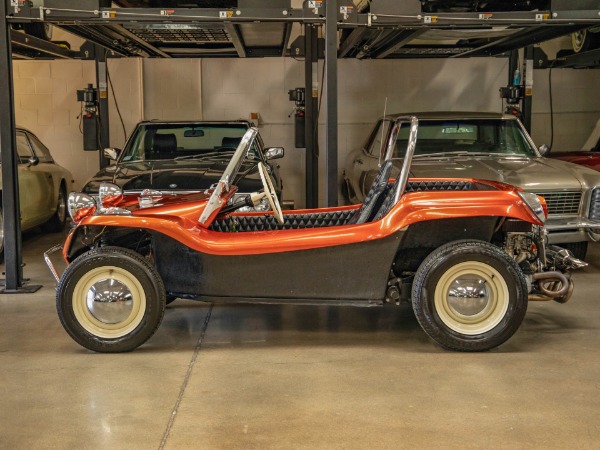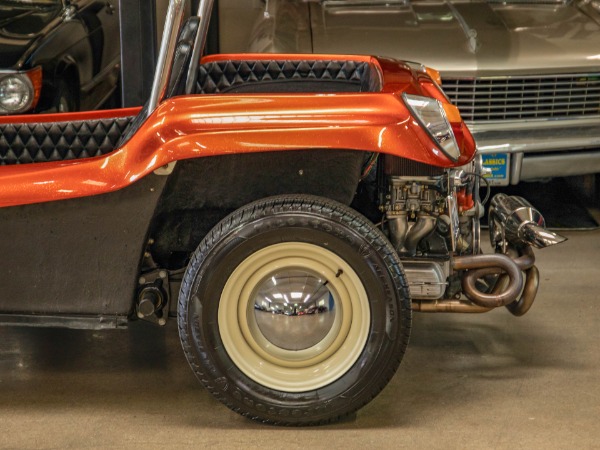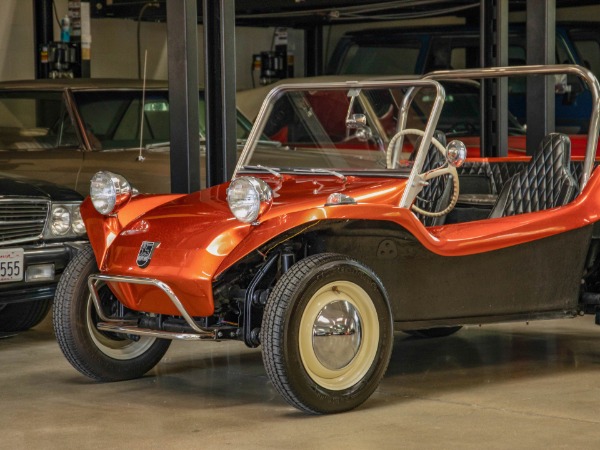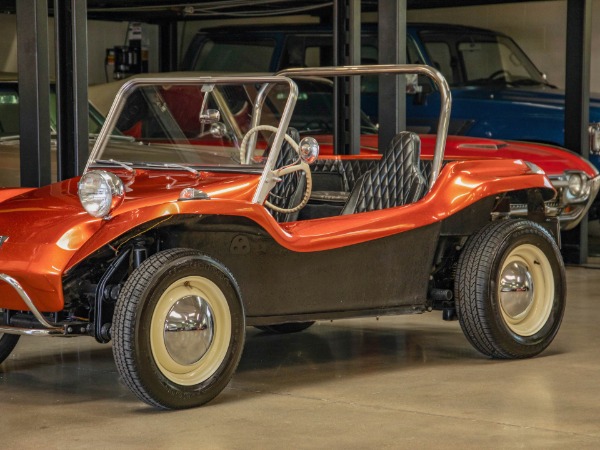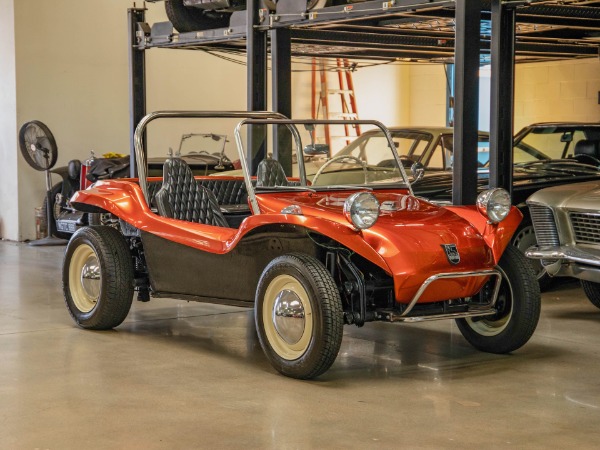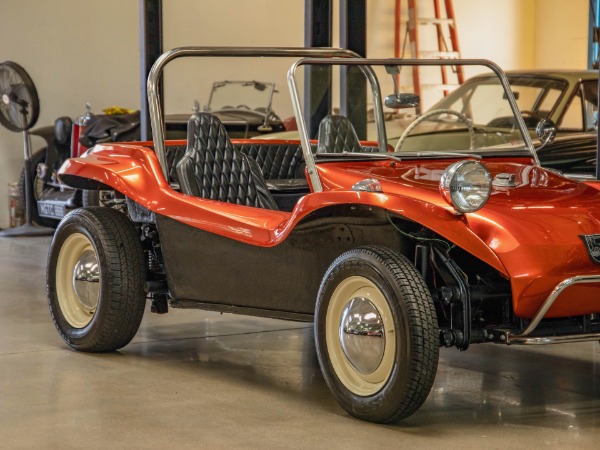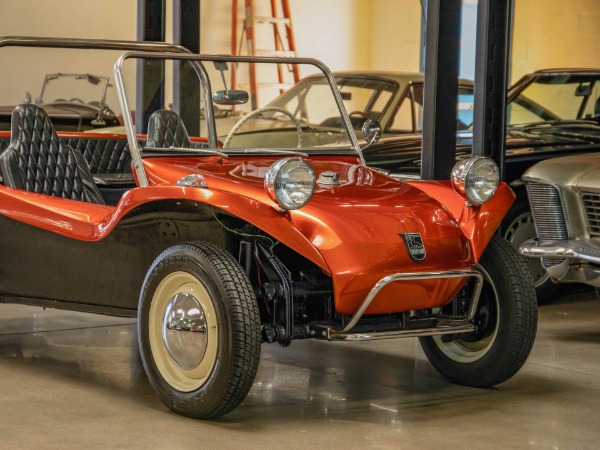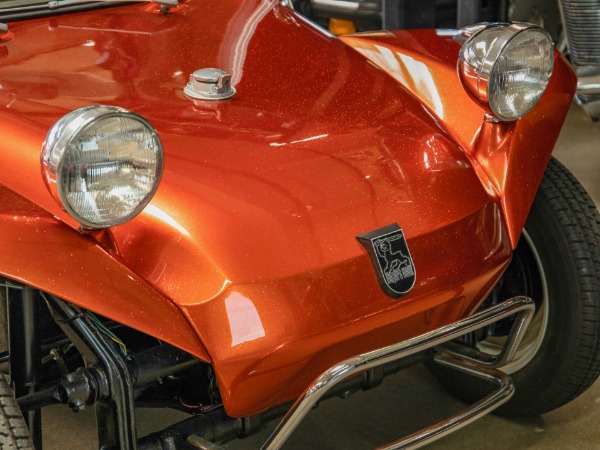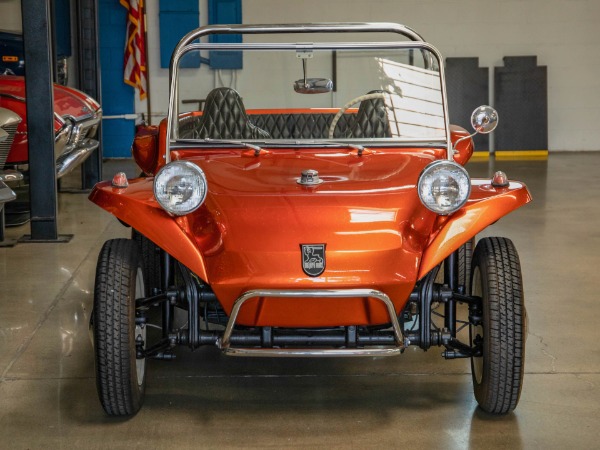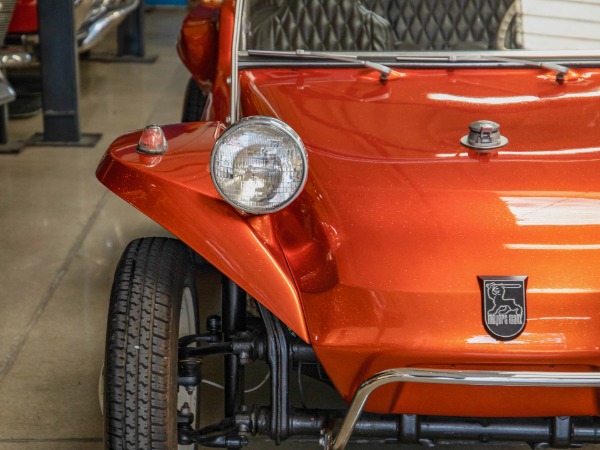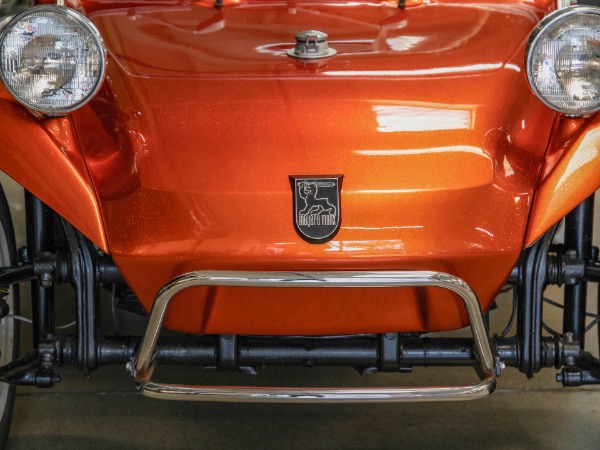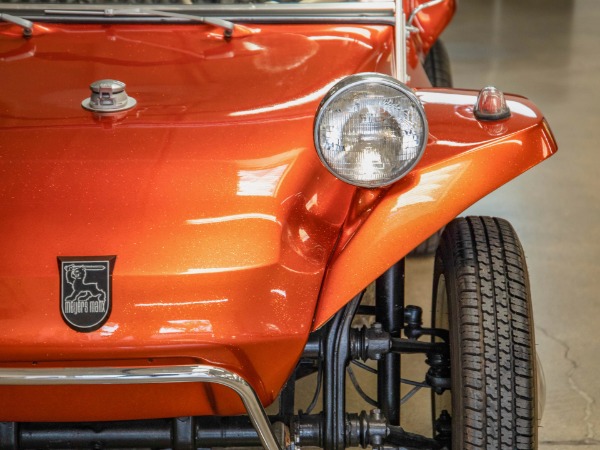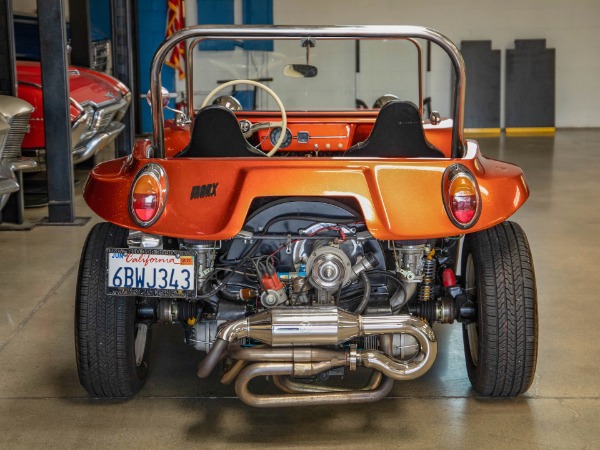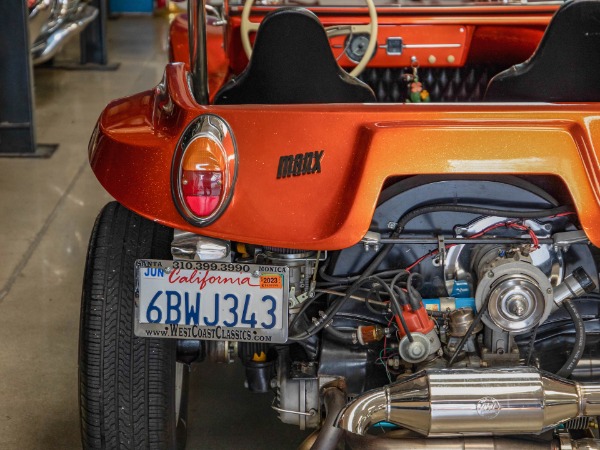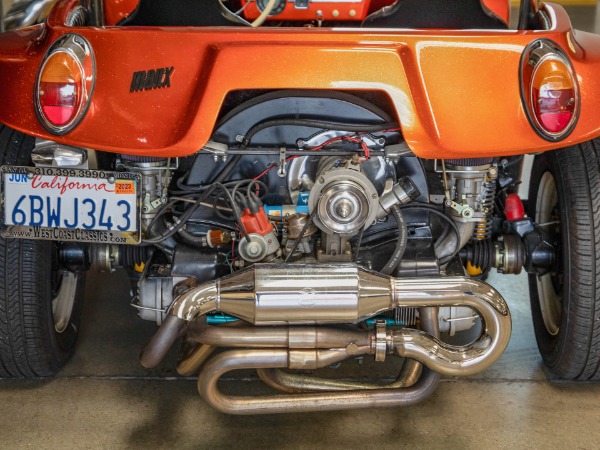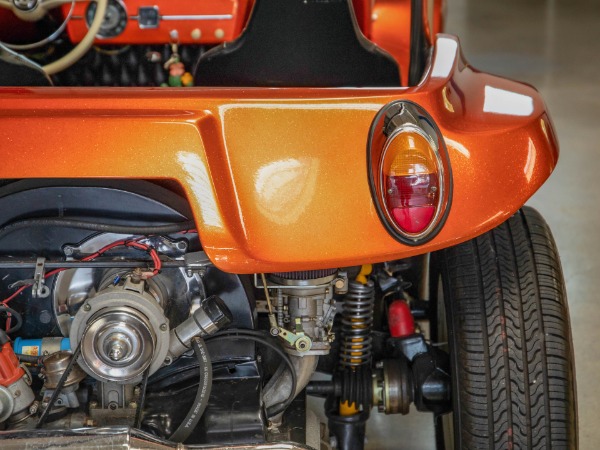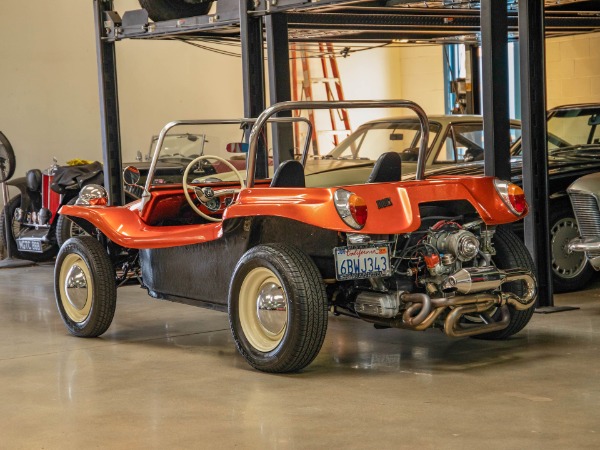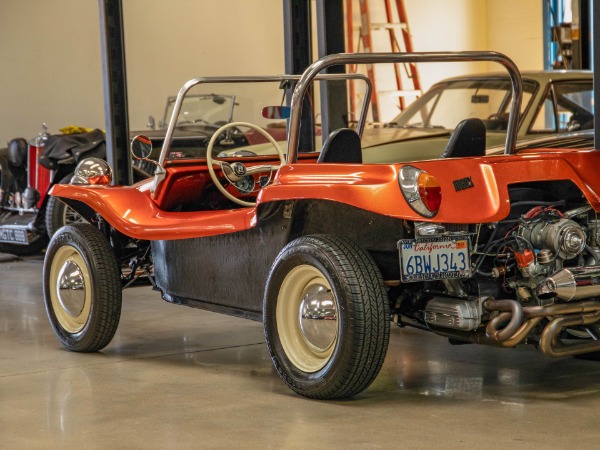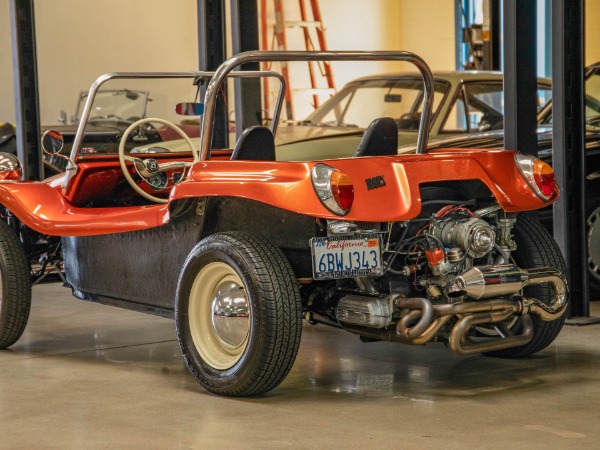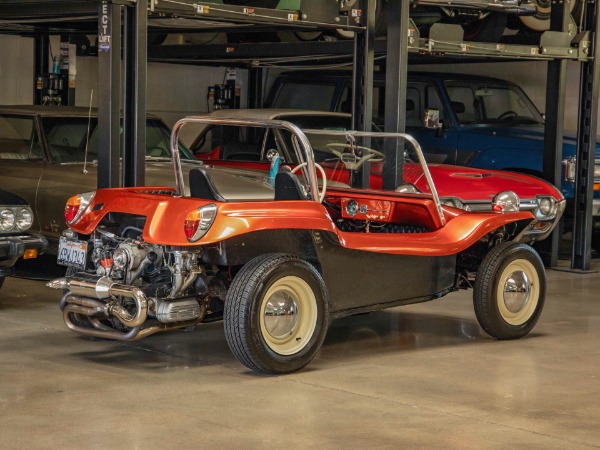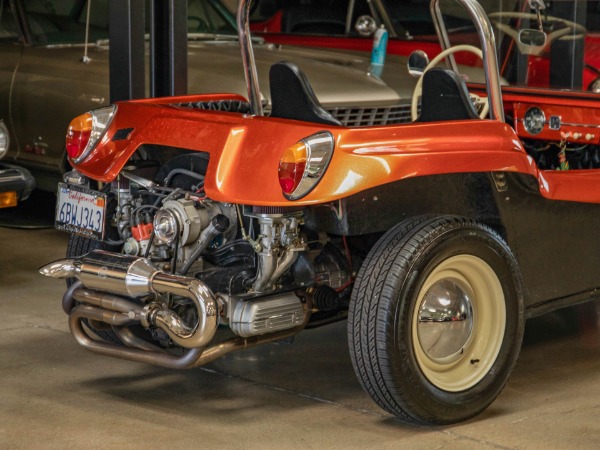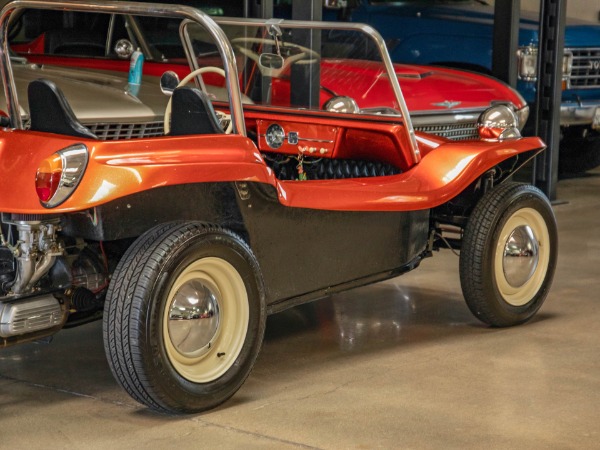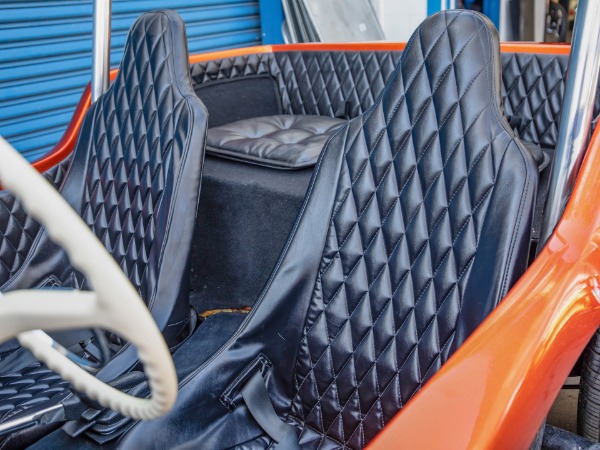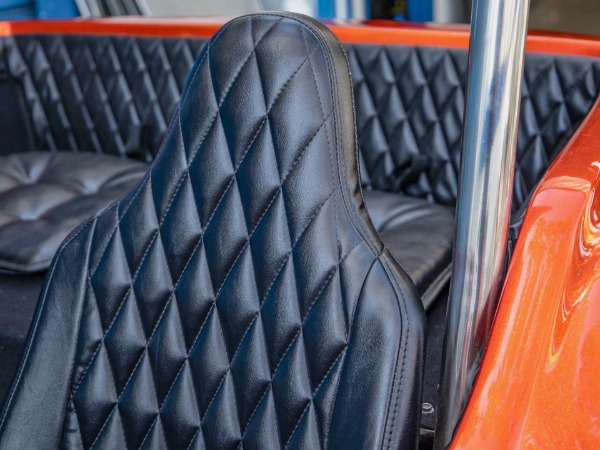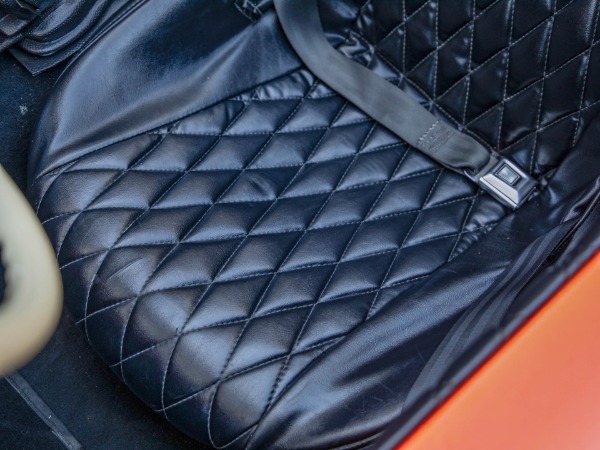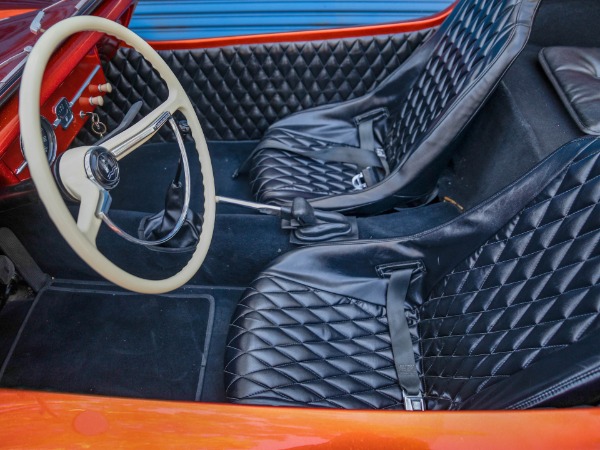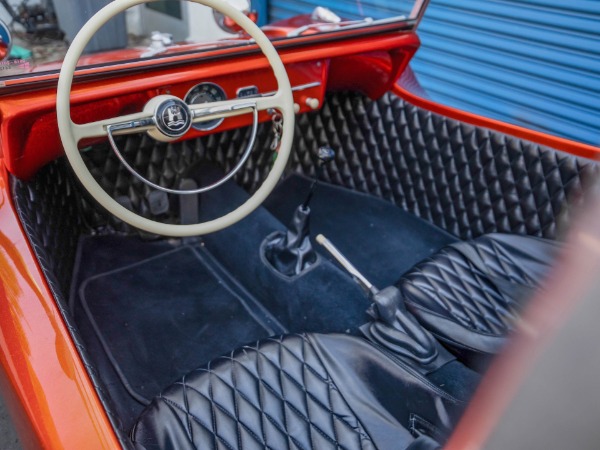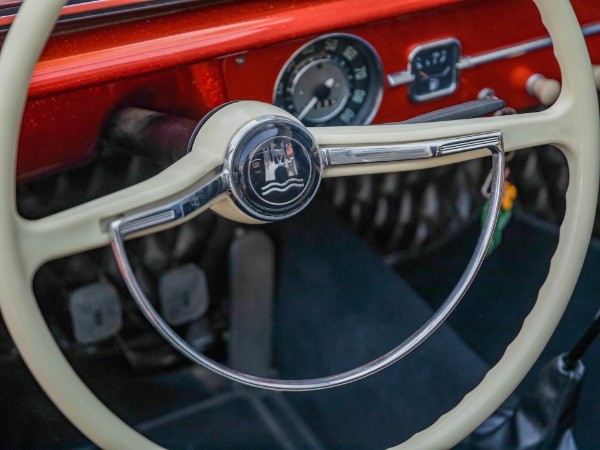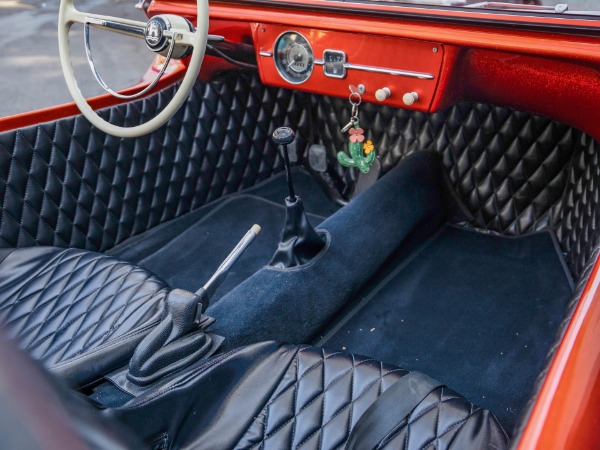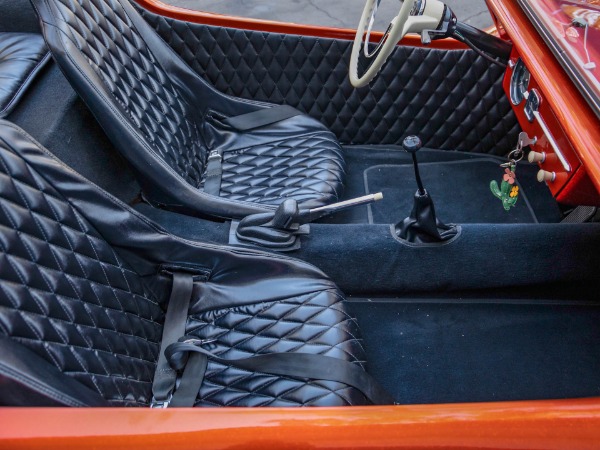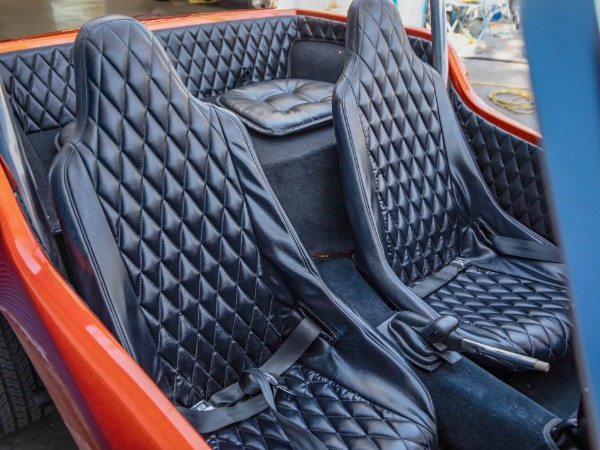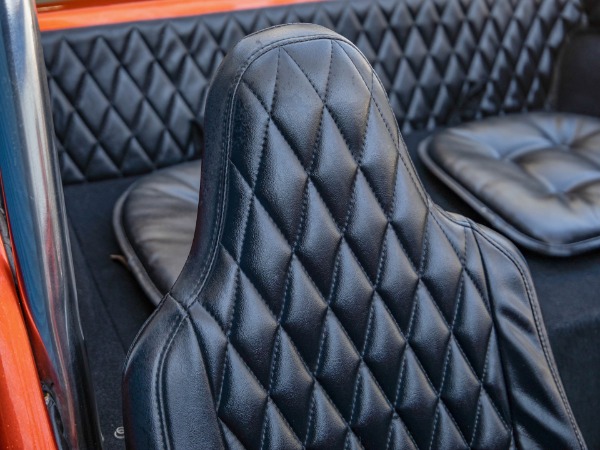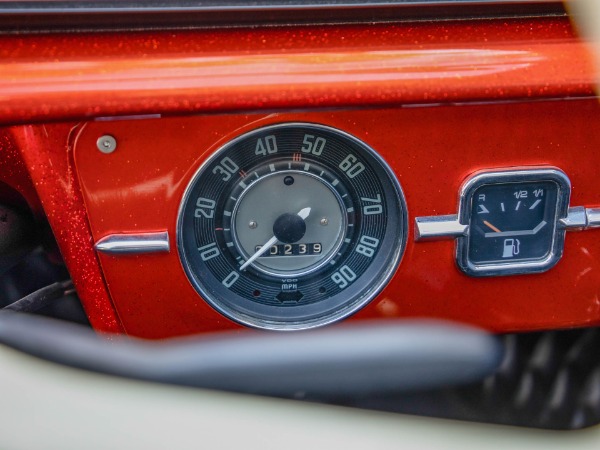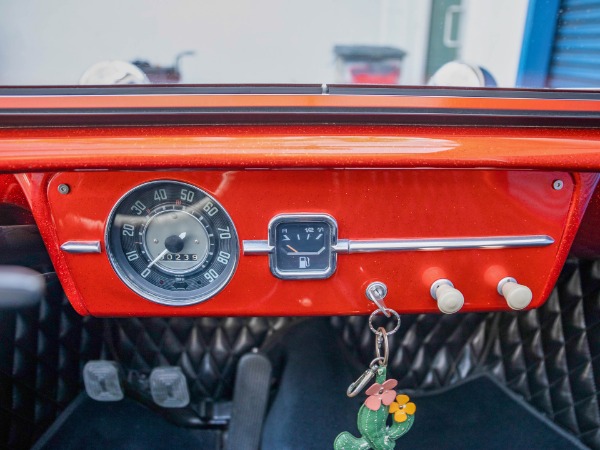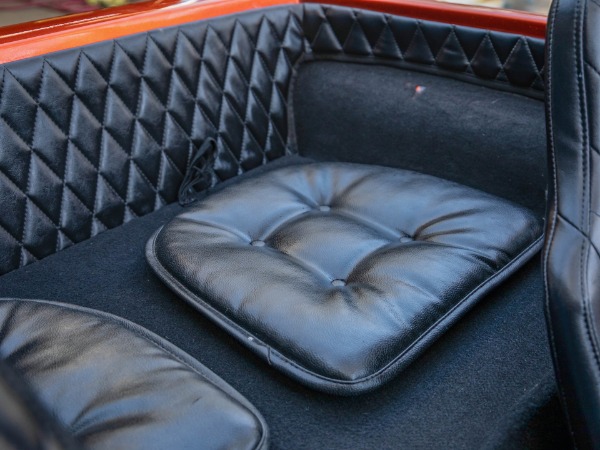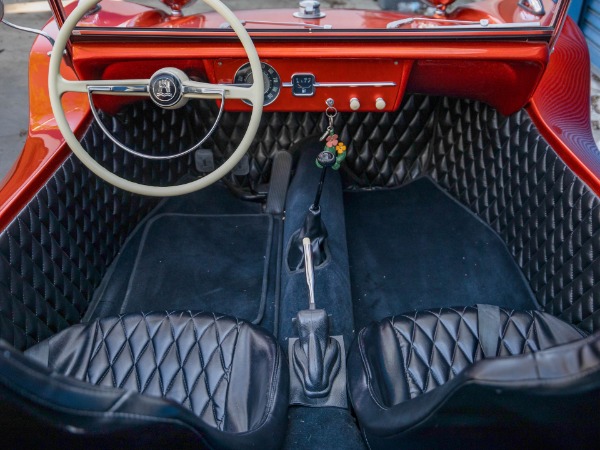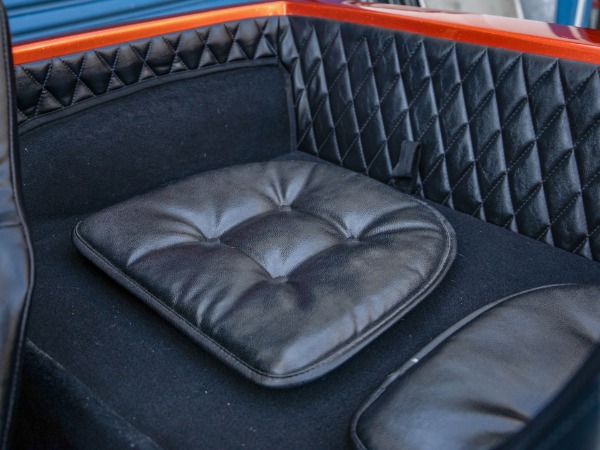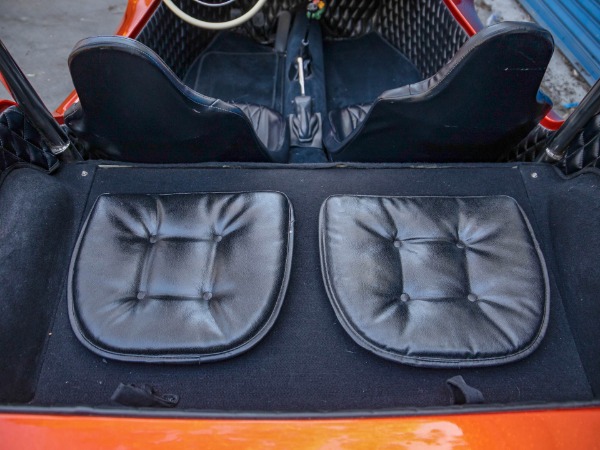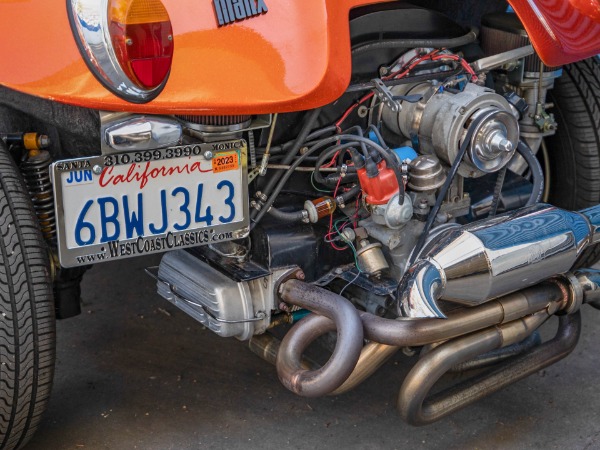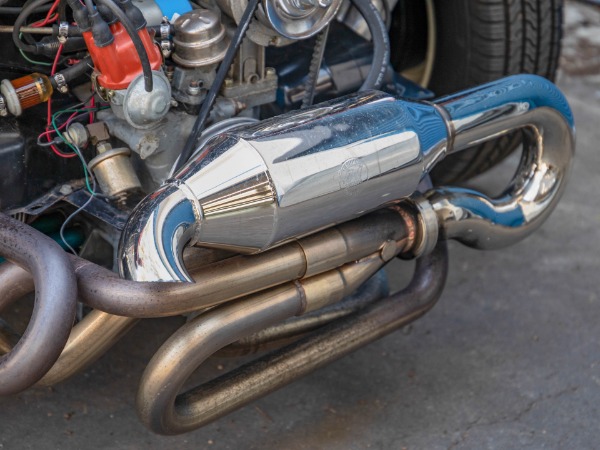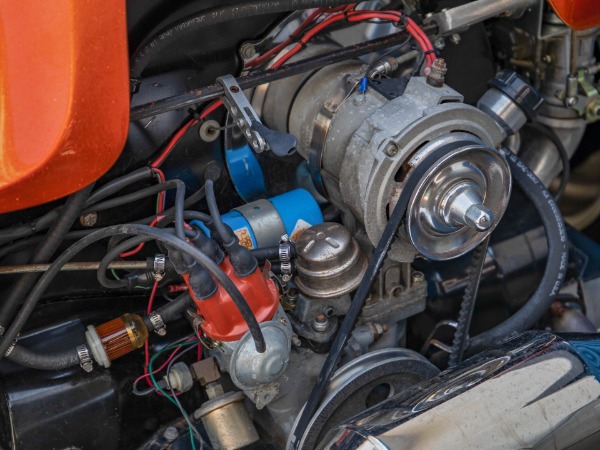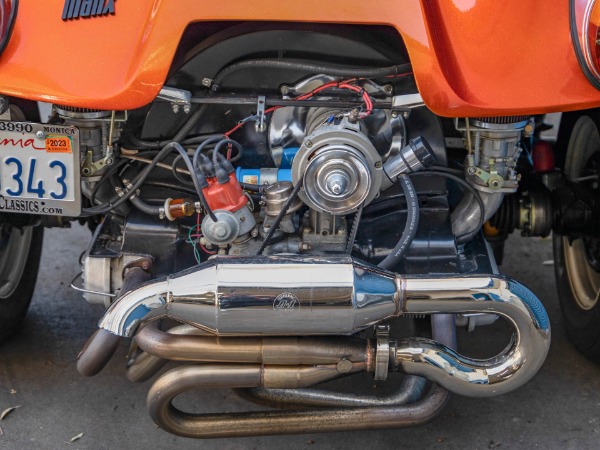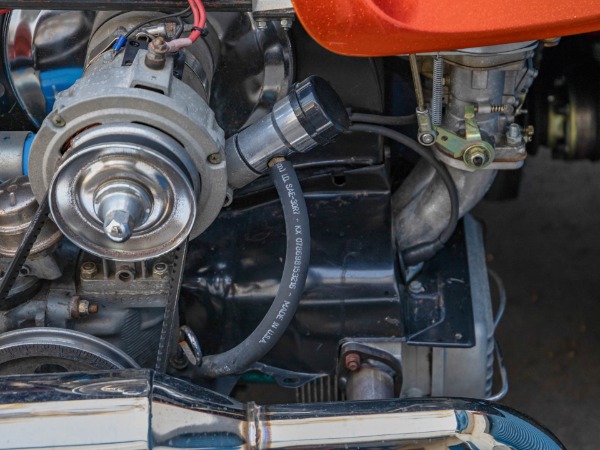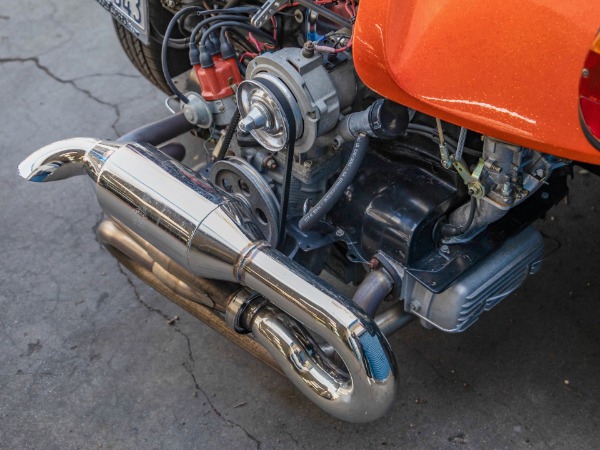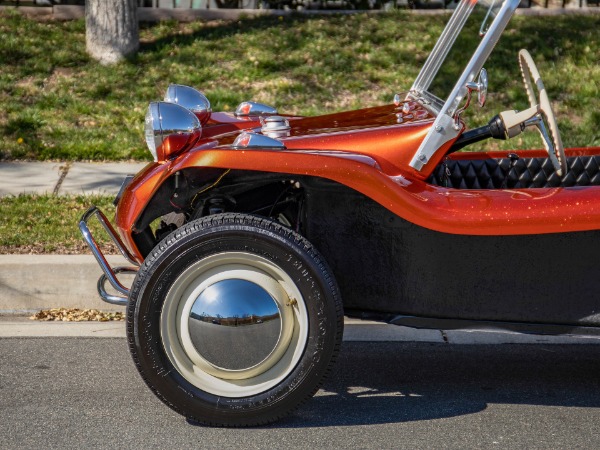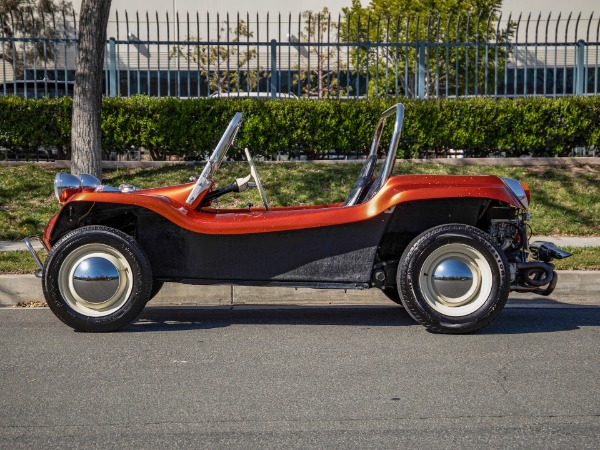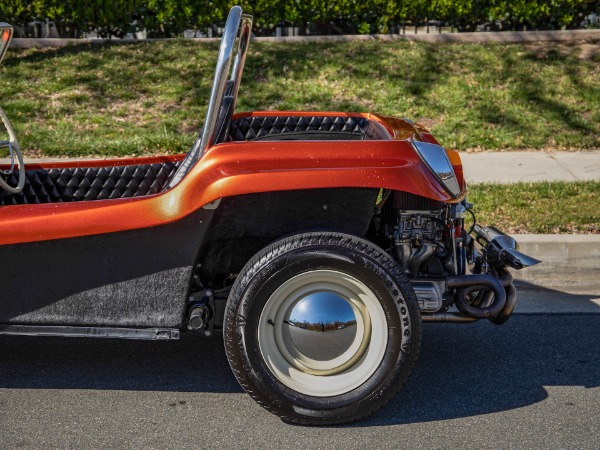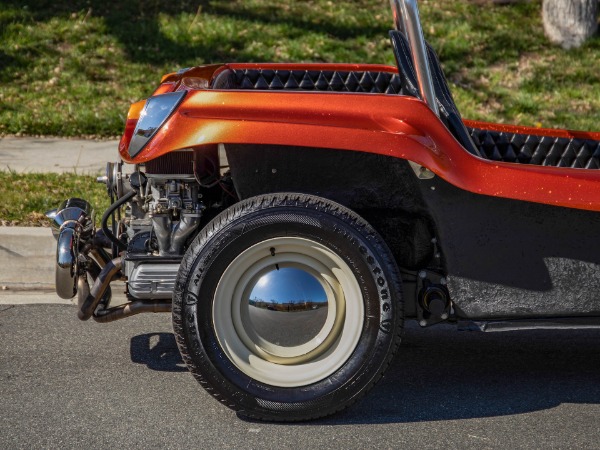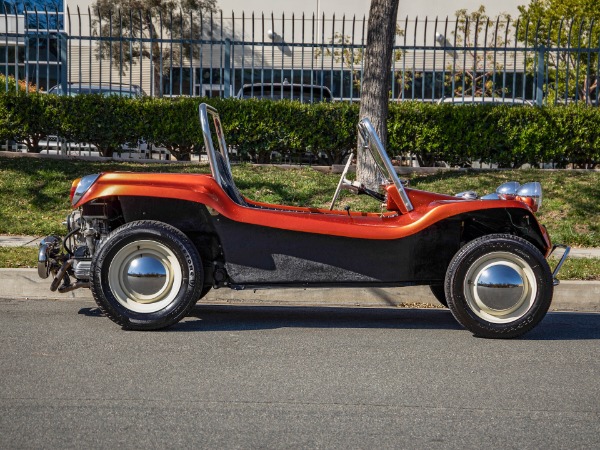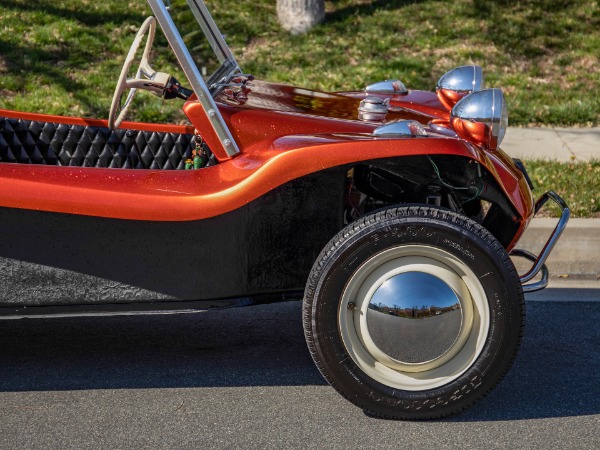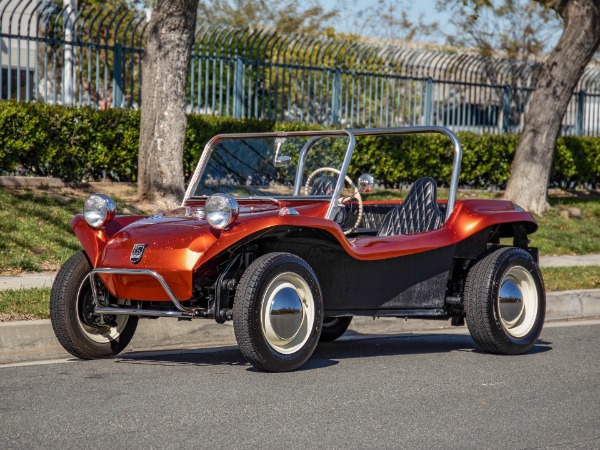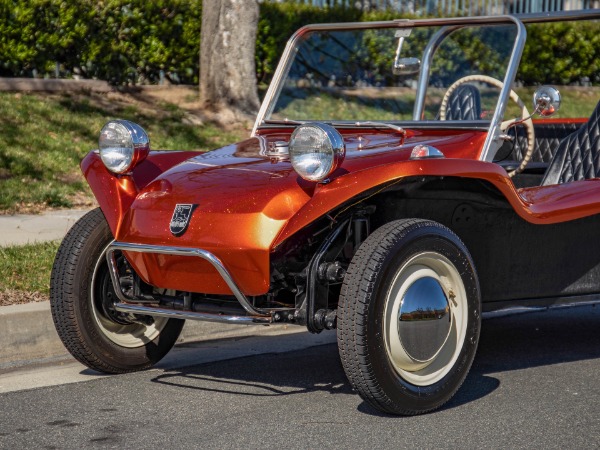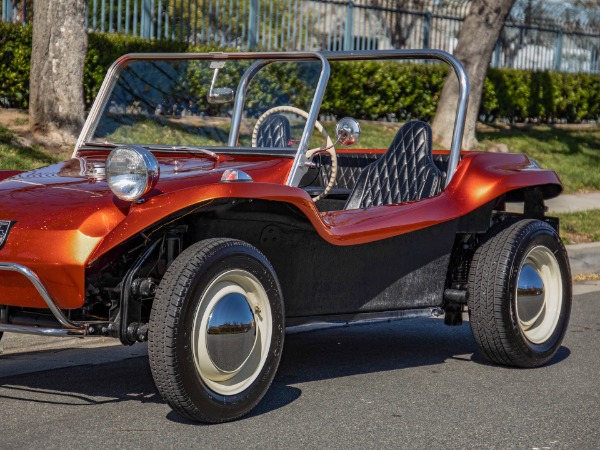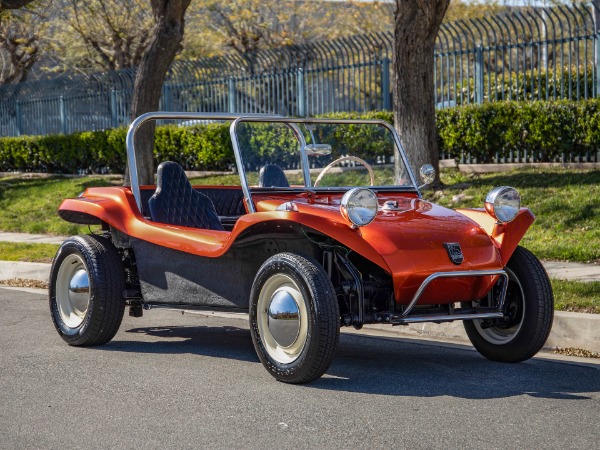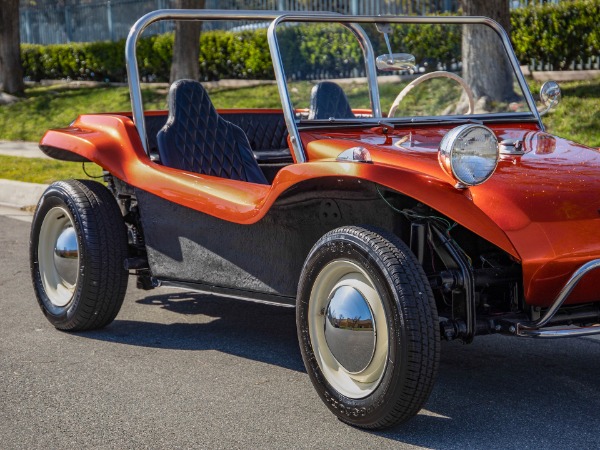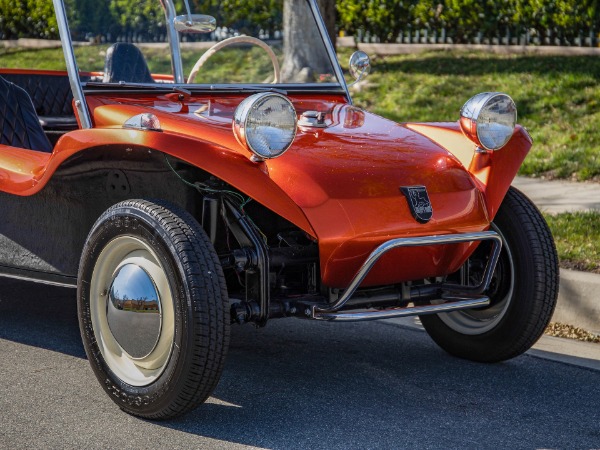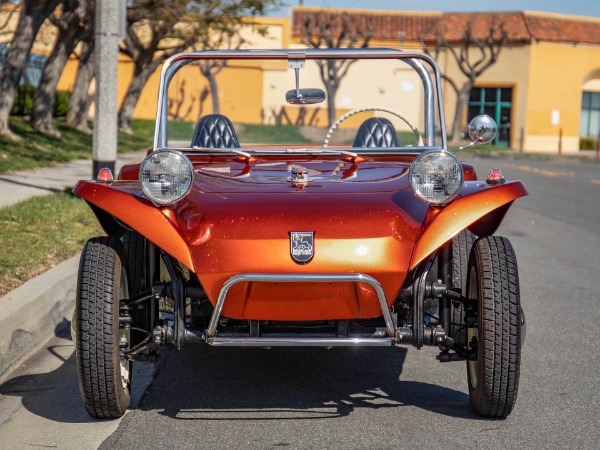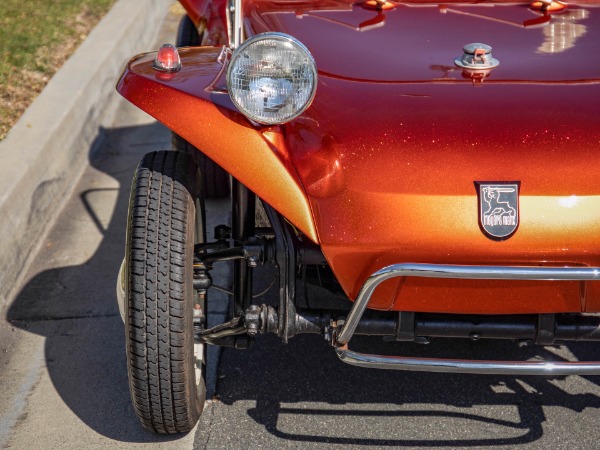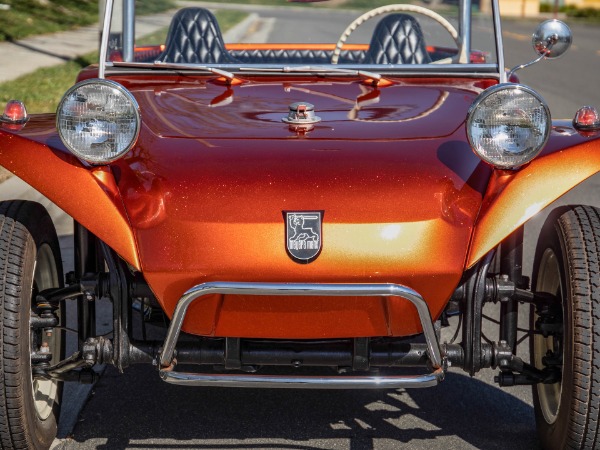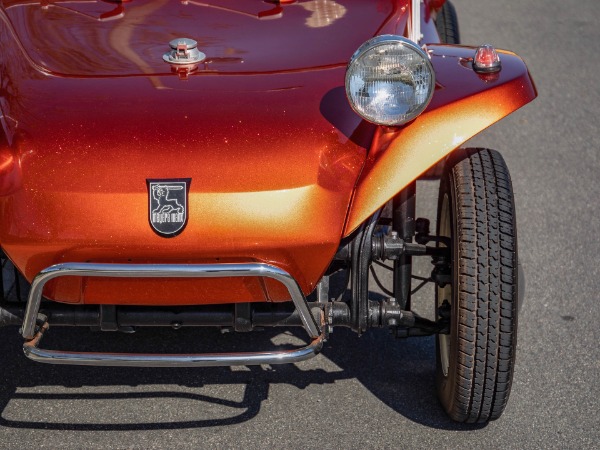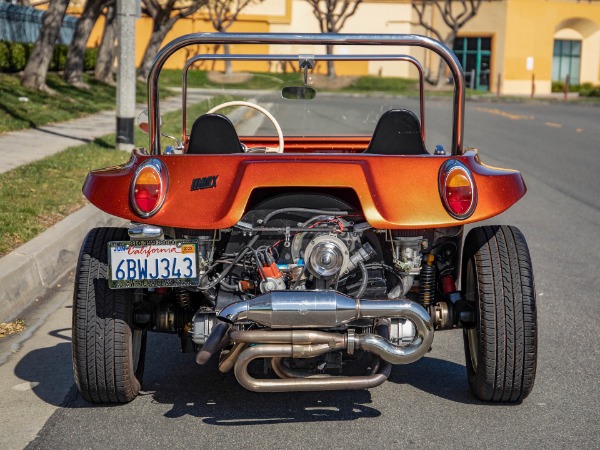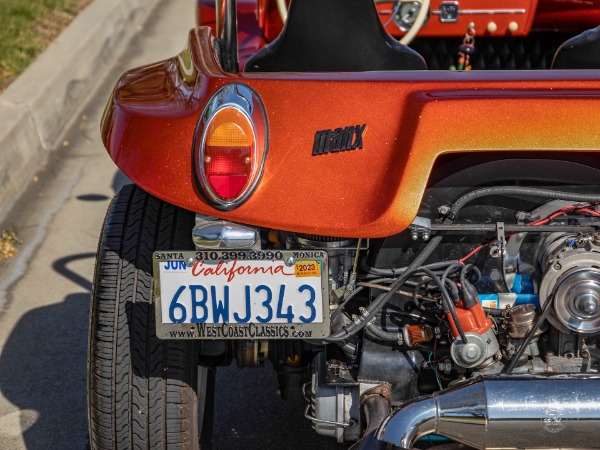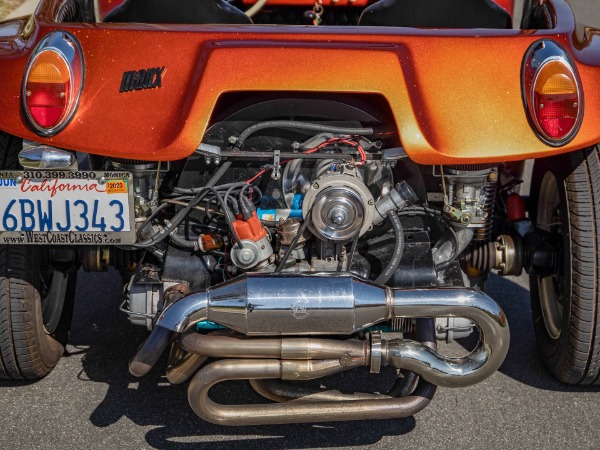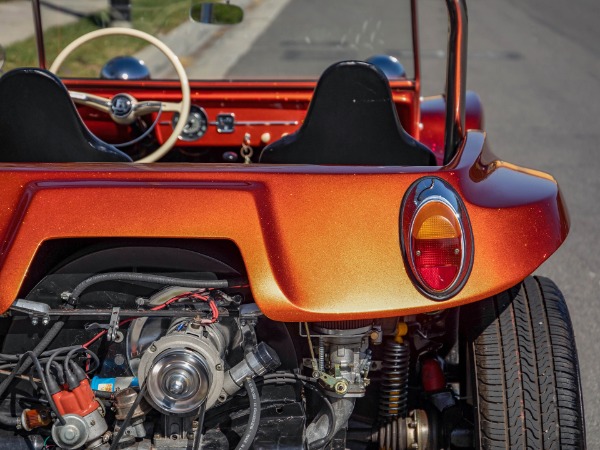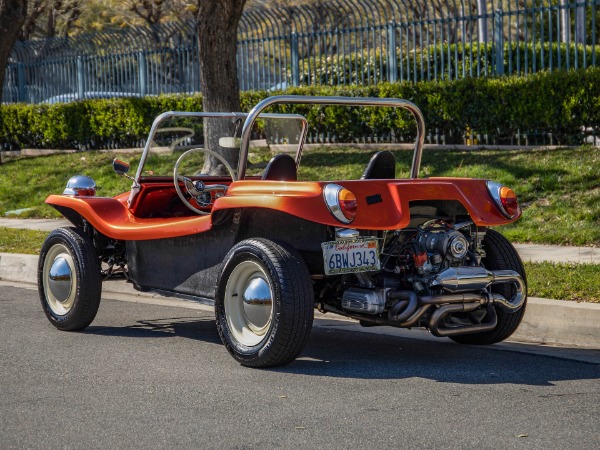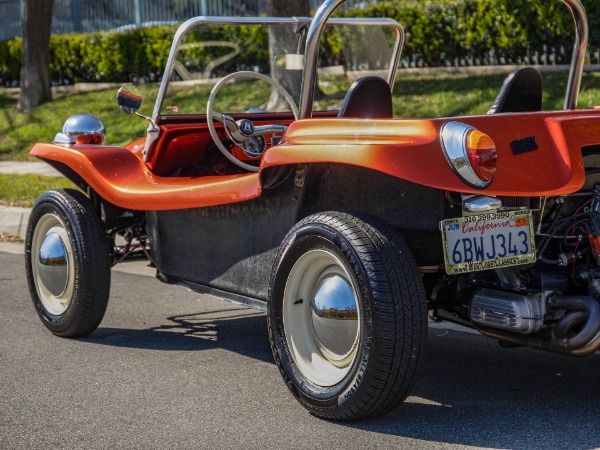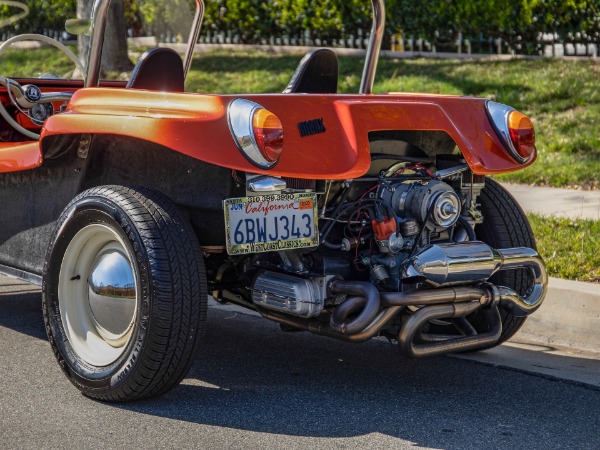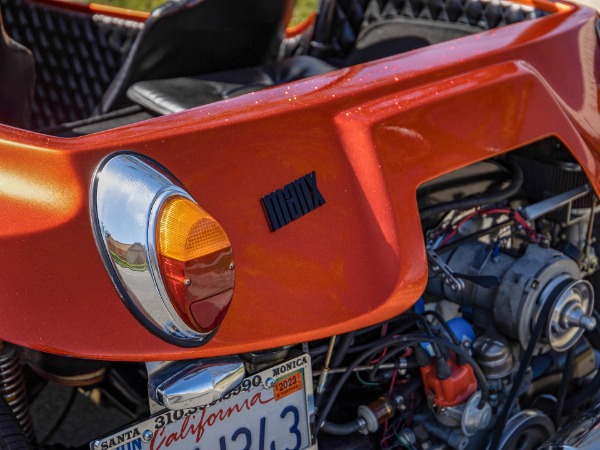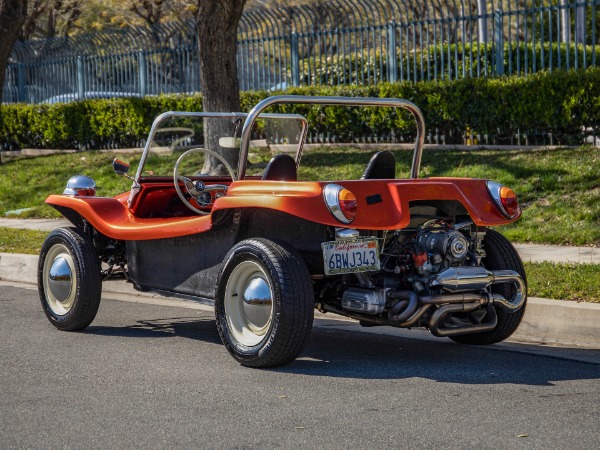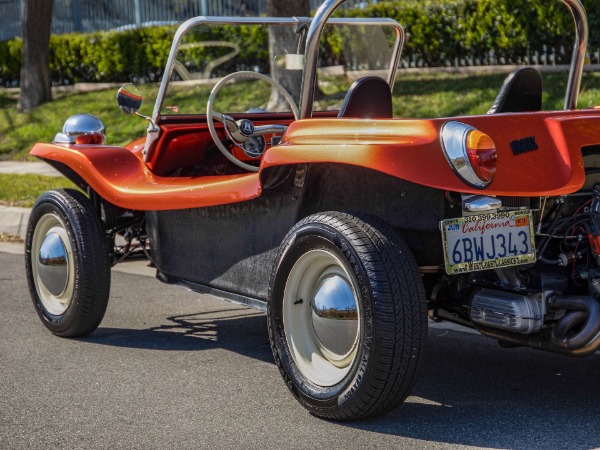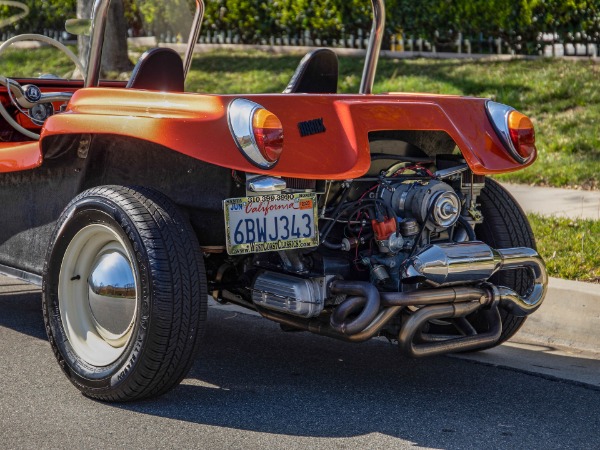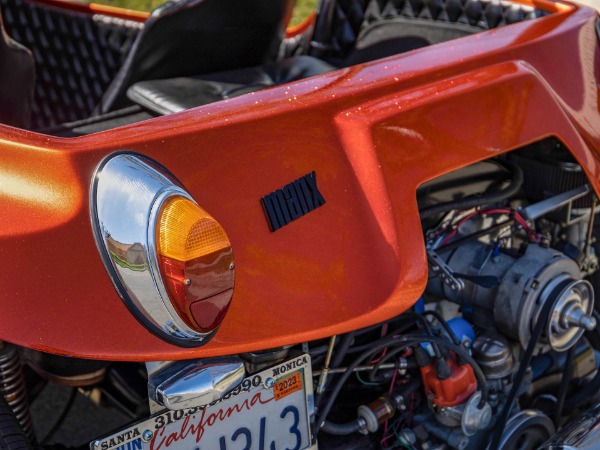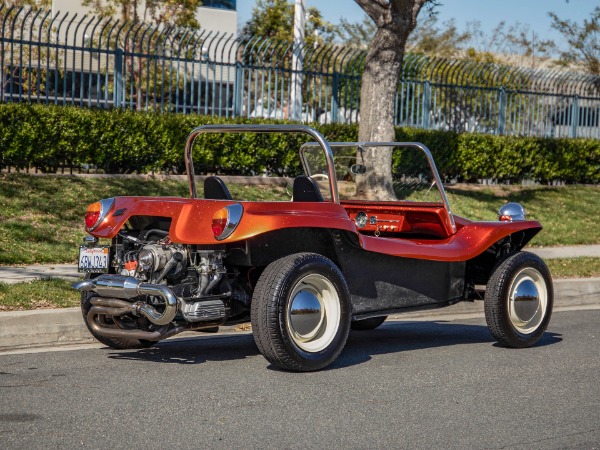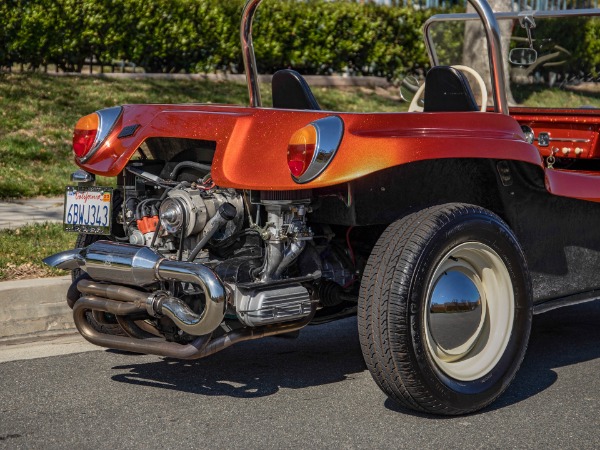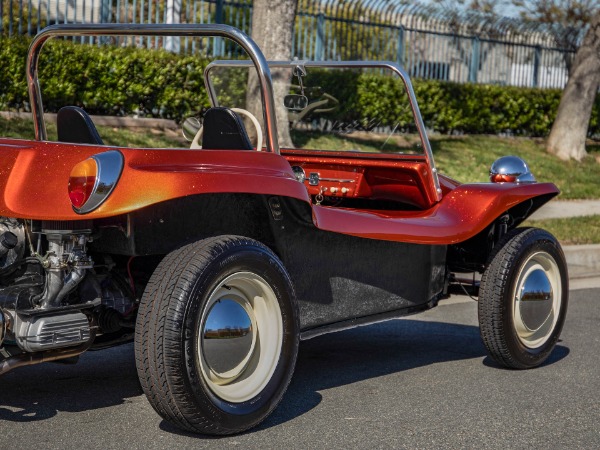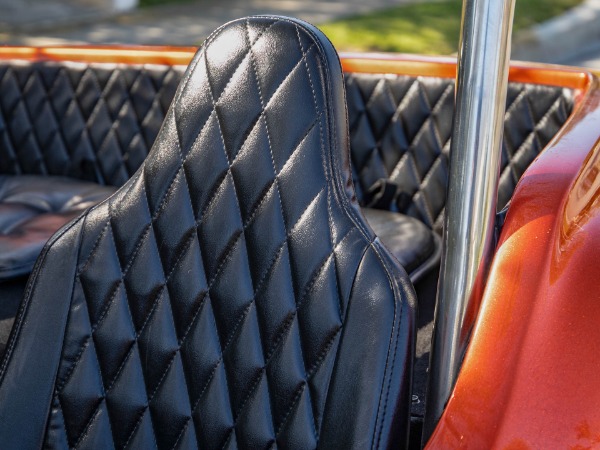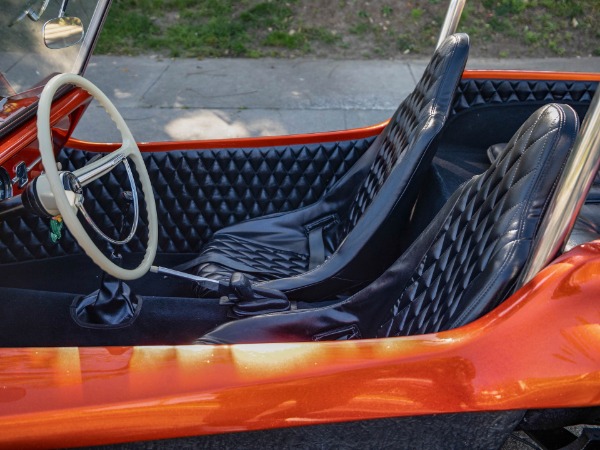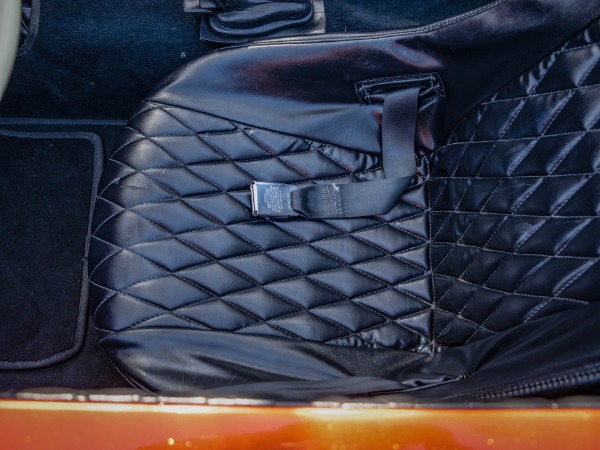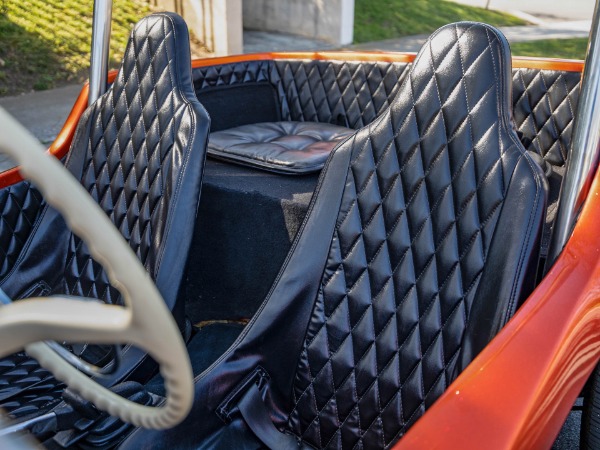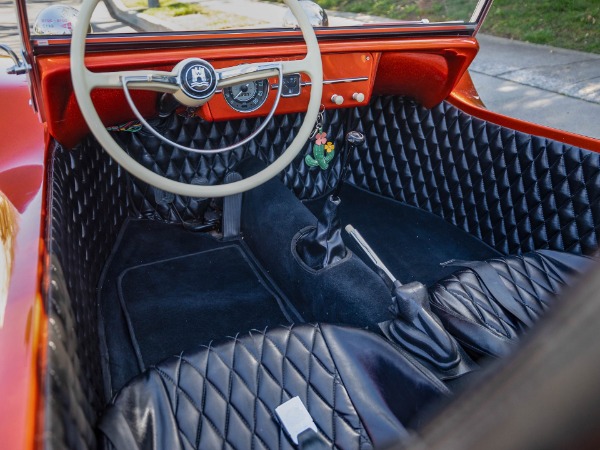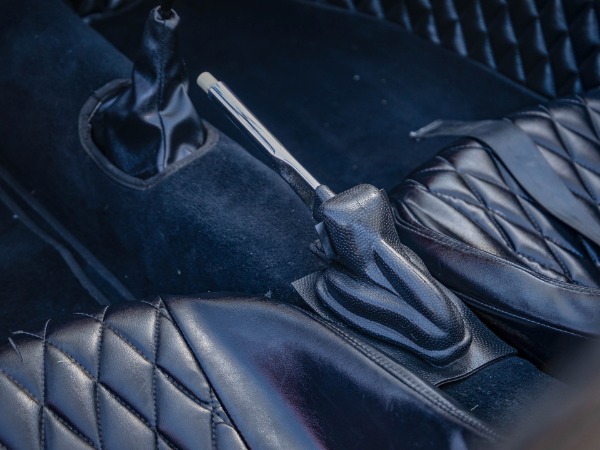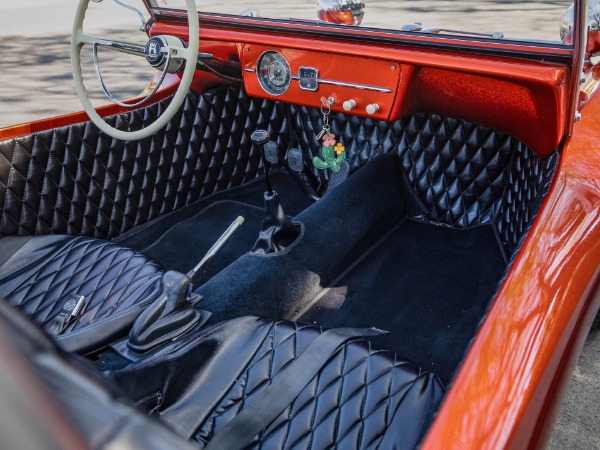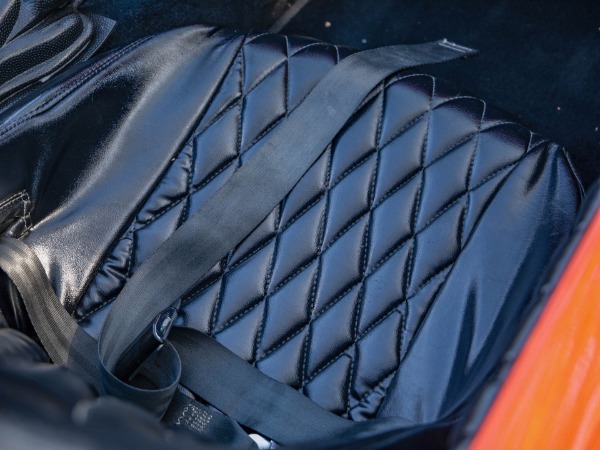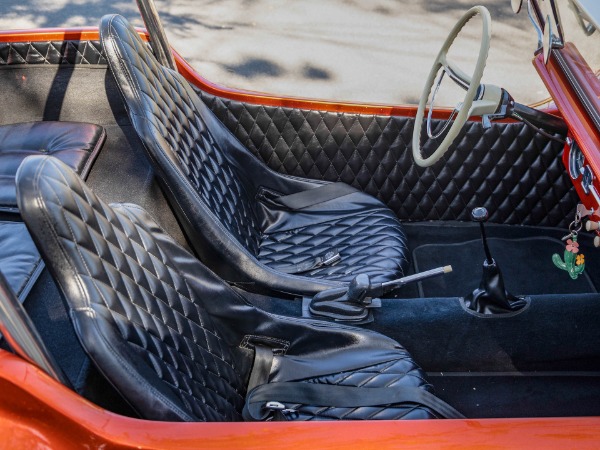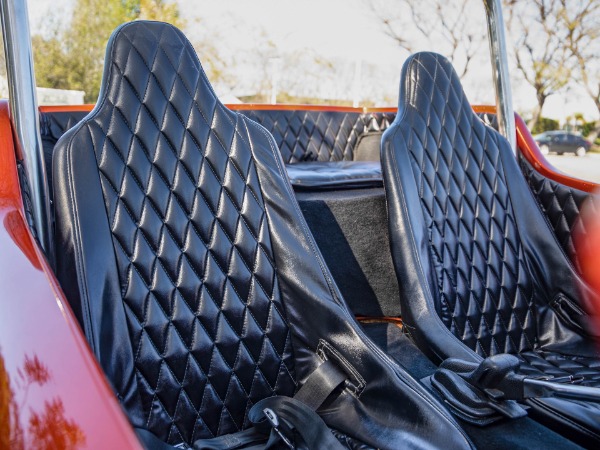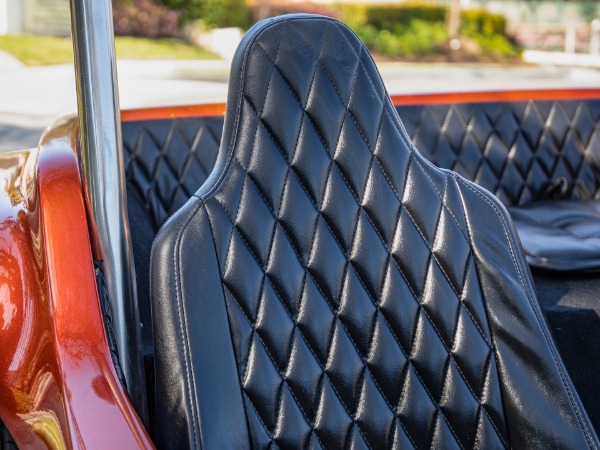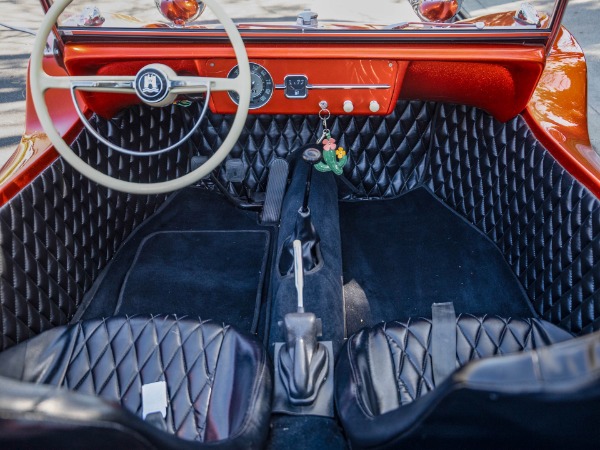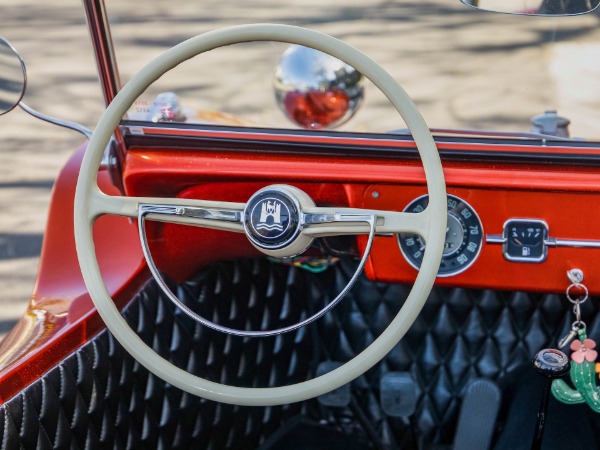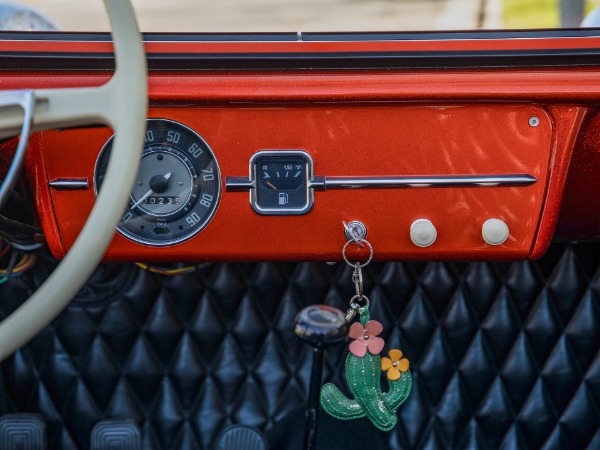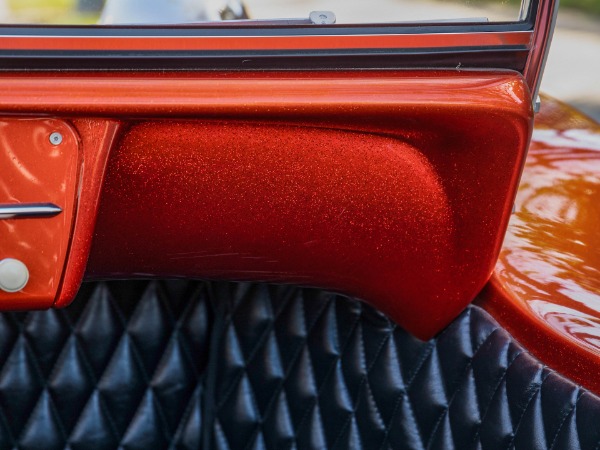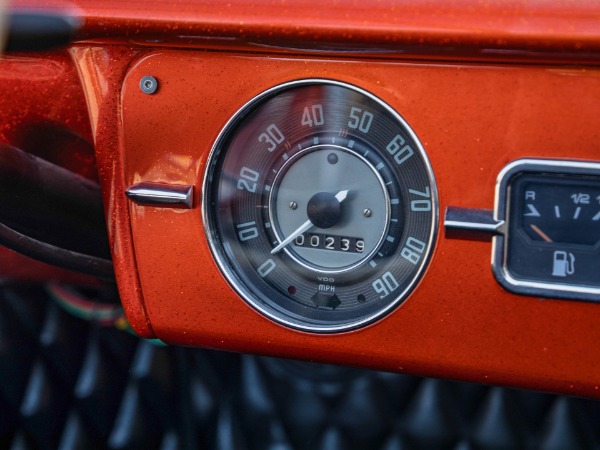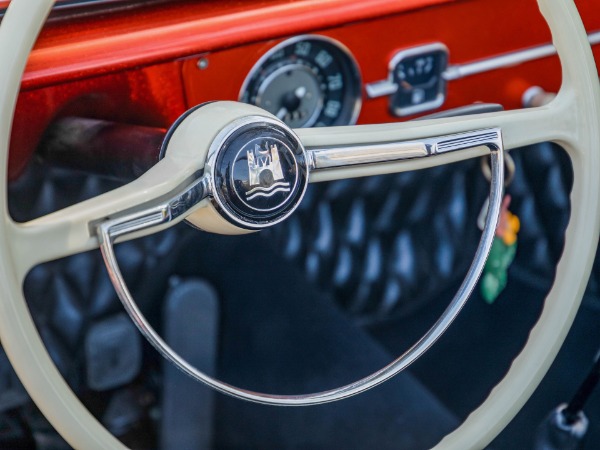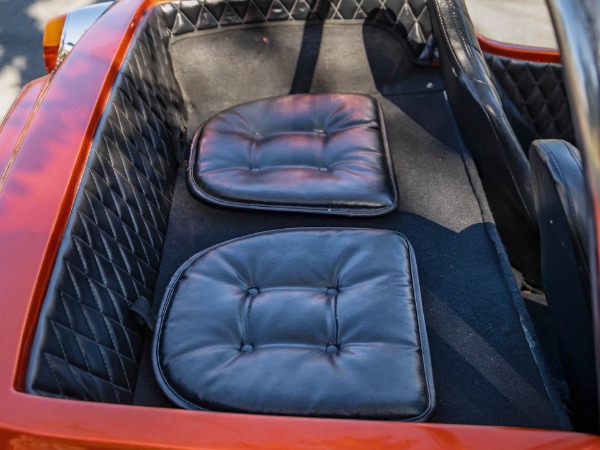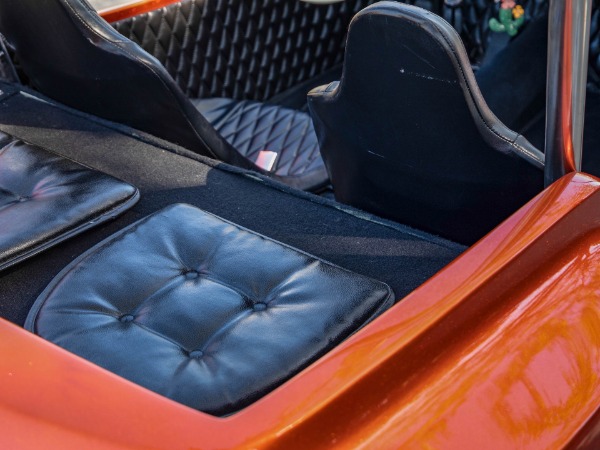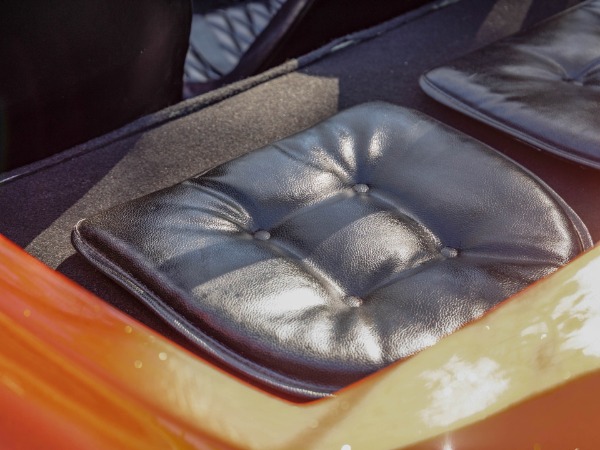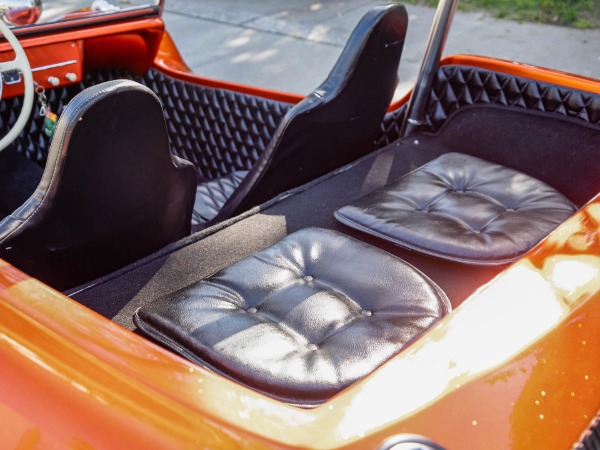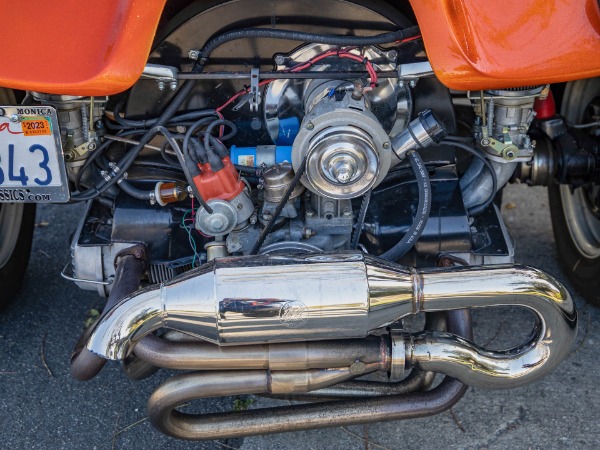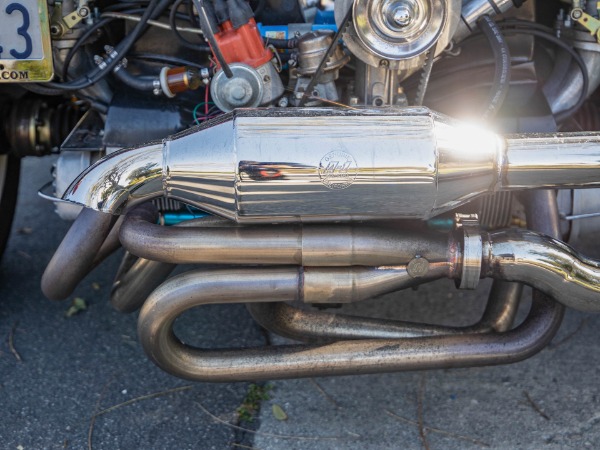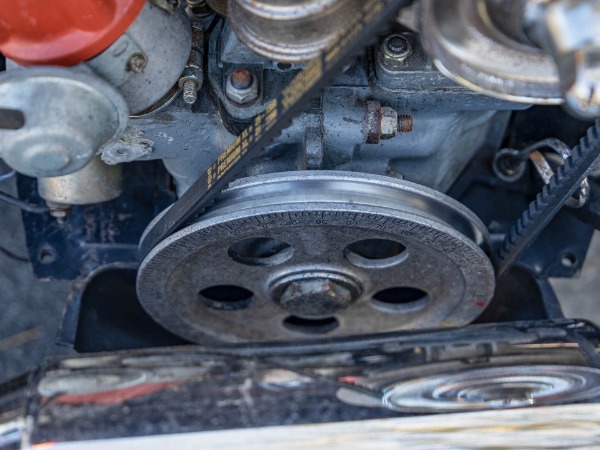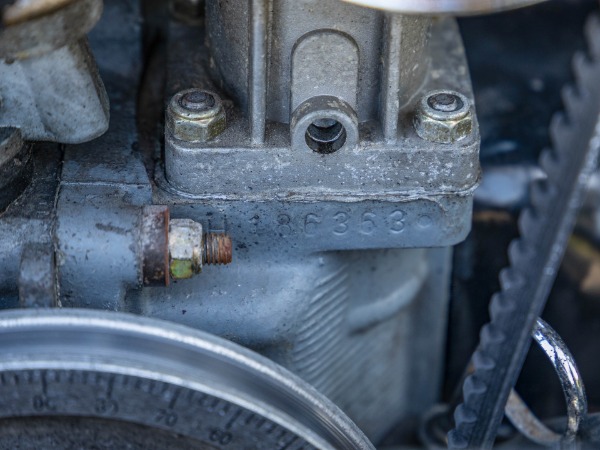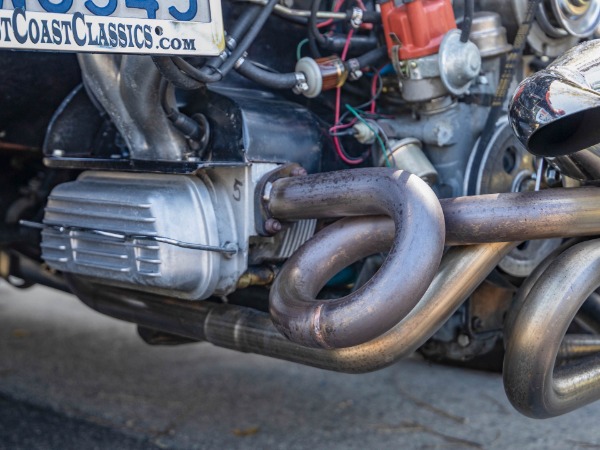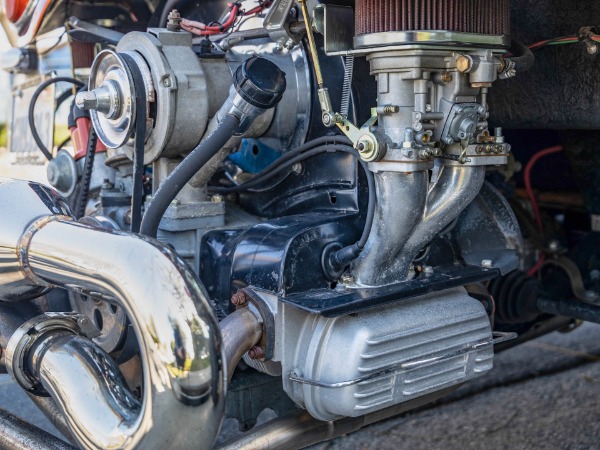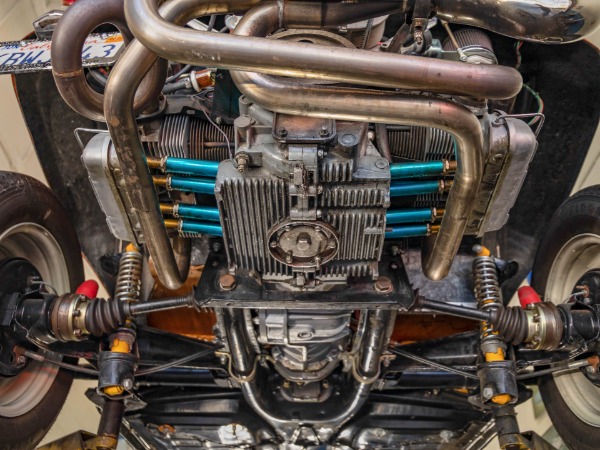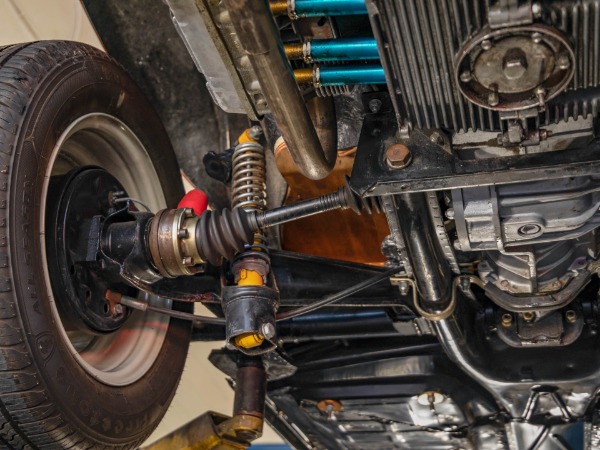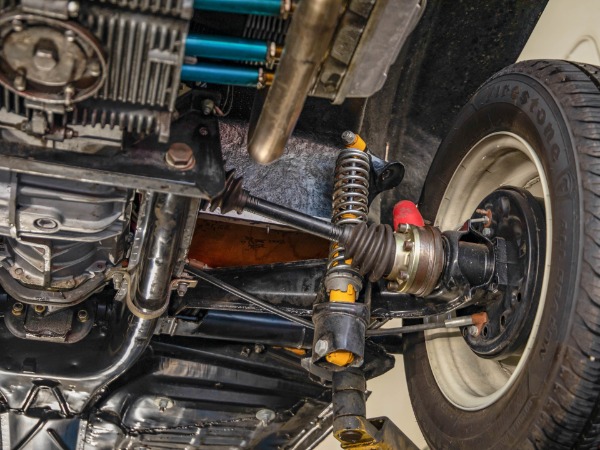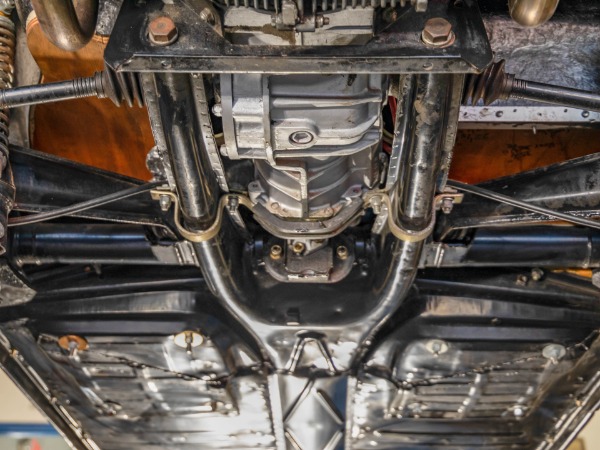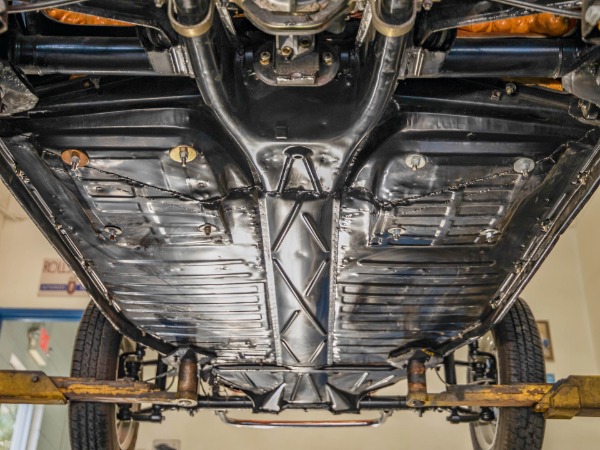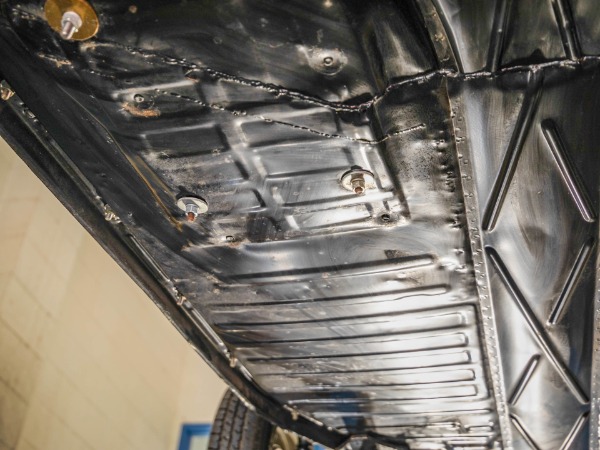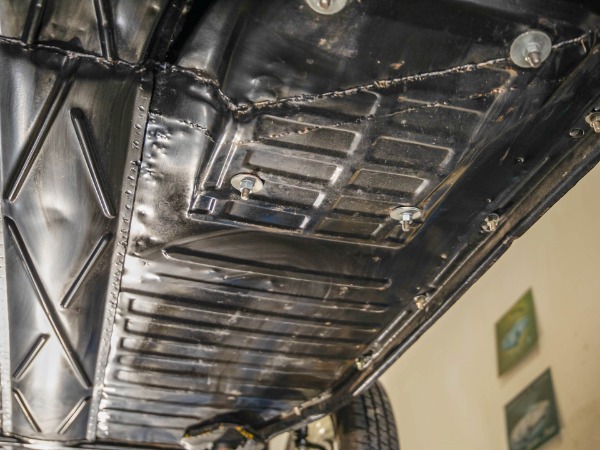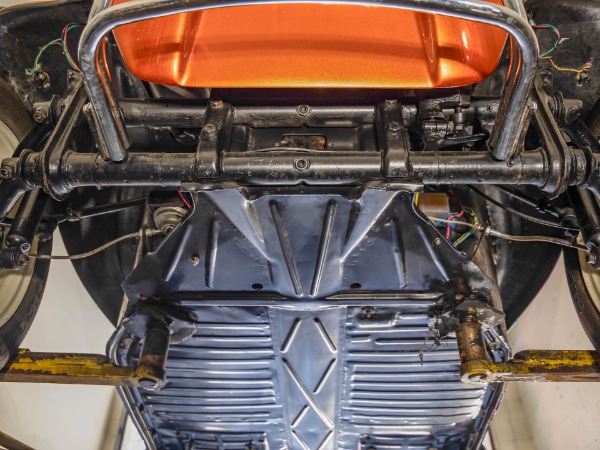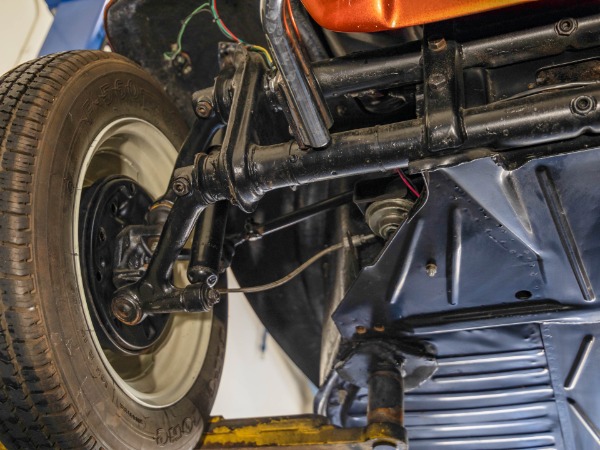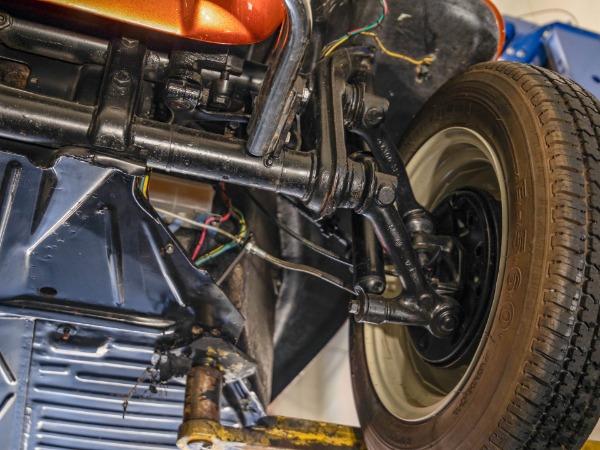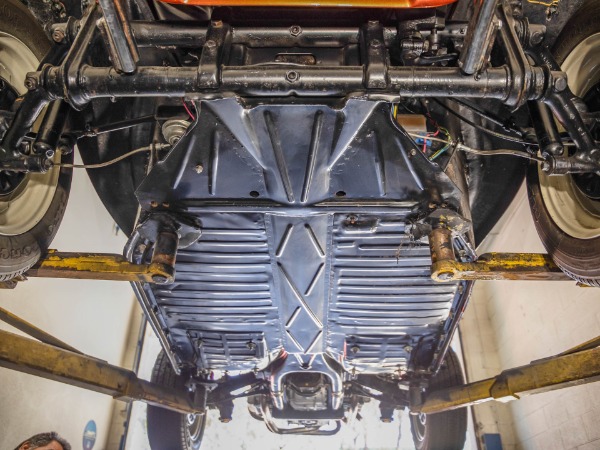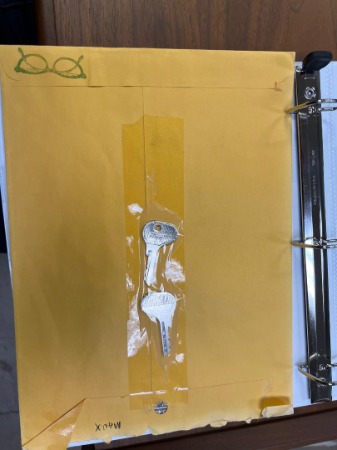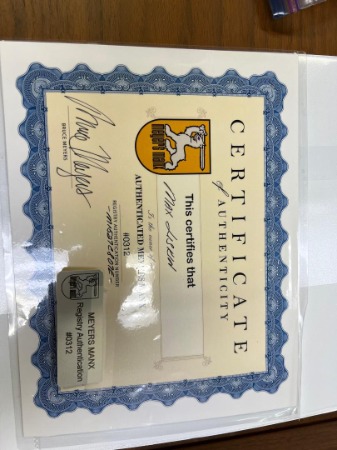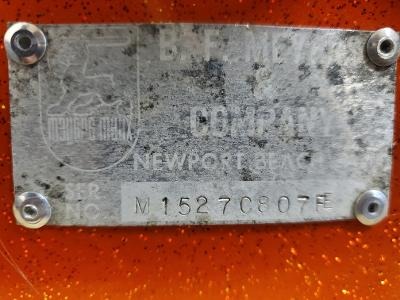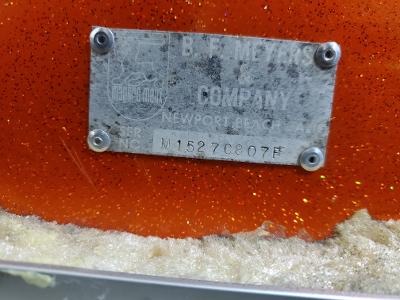West Coast Classics are proud to present a beautiful example of this rare mostly all original survivor certified 1970 Volkswagen Myers Manx #312 with COA from Bruce Myers with the odometer showing only 239 miles!
Meyers Manx registry no. 0312
Certificate of Authenticity signed by Bruce Meyers
Fiberglass body
Flat 4-cylinder engine
4-speed manual transmission
Finished in Burnt Orange Metallic
Black button-tucked bucket seats
Painted steel wheels
Chrome hubcaps
Extra keys
This is an original Manx and a rust free car and a very fine example of a real certified Bruce Myers Manx with very striking 'Burnt Orange Metallic' color paint and its original diamond pleated Black color seats interior. The 4 cylinder engine is extremely strong and responsive and the 4 speed manual transmission shifts smoothly through the gears and the engine temperature always remains cool.
The Meyers Manx dune buggy is a small recreationally-oriented automobile, designed initially for desert racing by Californian engineer, artist, boat builder and surfer Bruce F. Meyers produced by his Fountain Valley, California company, B. F. Meyers & Co. from 1964 to 1971, in the form of car kits applied to shortened chassis of Volkswagen Beetles. The car line dominated dune racing in its time, breaking records immediately, and was eventually also released in street-oriented models, until the company's demise due to tax problems after Meyers's departure.
In late 1963 to May 1964 Myers started building the buggy's in his garage in Newport Beach, California and it was the first known street-legal fiberglass dune buggy. It featured a unibody shell that fused body, fenders and frame, retaining just the engine, transmission and other mechanicals of the VW, and with no top and no hood. The use of compound curves throughout provided great rigidity. The fenders were arched high, to make room for large, knobby dirt-racing wheels.
The 'Manx' name for the shortened, taller-wheeled, more maneuverable VW Beetle mods refers to and derives from the comparably stubby Manx cat breed and the name also suggests racing fitness, as the already globally renowned, British-manufactured Norton Manx motorcycle dominated the Isle of Man TT, Manx Grand Prix and other Isle of Man-based (i.e. Manx) international races from the 1940s to the early 1970s although the Meyers Manx has no direct connection to the Isle of Man.
Meyers produced kits later in 1964 and into 1965, marketed under the name Meyers Manx. Although this early design was critically acclaimed, even featured on the April 1967 cover of Car & Driver magazine, and drew much attention, it proved too expensive to be profitable; ultimately only 12 kits of the monocoque Manx were produced. Meyers ushered in an era of Meyers Manx "domination in off-road events ... and the formation of NORRA (National Off-Road Racing Association)"
The commercially manufactured Meyers Manx Mk I featured an open-wheeled fiberglass bodyshell, coupled with the Volkswagen Beetle H4 flat-four engine (1.2 L, 1.3 L, 1.5 L and 1.6 L, in different models) and a modified, RR-layout Beetle frame. It is a small car, with a wheelbase 14+14 inches (36 cm) shorter than a Beetle automobile for lightness and better maneuverability. For this reason, the car is capable of very quick acceleration and good off-road performance, despite not being four-wheel drive. The usually street-legal car redefined and filled a recreational and competitive niche that had been essentially invented by the first civilian Jeep in 1945, and which was later to be overtaken by straddle-ridden, motorcycle-based all-terrain vehicles (introduced in 1970) and newer, small and sporty (but usually four-wheel-drive), off-road automobiles.
The commercial Meyers Manx received widespread recognition when it defeated motorcycles, trucks and other cars to win the inaugural 1967 Mexican 1000 race (the predecessor of the Baja 1000). It crossed automotive press genre lines, being selected as the cover story in the August 1966 issue of Hot Rod magazine, Approximately 6, 000 of the original Meyers Manx dune buggies were produced, but when the design became popular many copies (estimated at a quarter of a million worldwide) were made by other companies. Although already patented, Meyers & Co. lost in court to the copiers, the judge rescinding his patent as unpatentable, opening the floodgates to the industry Meyers started.
Since then, numerous vehicles of the general "dune buggy" or "beach buggy" body type, some VW-based, others not, have been and continue to be produced. The company ceased operation in 1971, after financial troubles, including with the Internal Revenue Service.
We understand that the car has been cosmetically or mechanically restored only as required over the years and since recently acquiring the car we have had the car inspected at our local mechanic specialists who have given the car a clean bill of health. There are no signs of any accidents or rust and the car is understood to have 239 original miles, having presumably always having been garaged with only occasional beach use.
This is a rare opportunity to own a very rare rust and accident free and internationally desirable certified 1970 Bruce Myers Manx !





